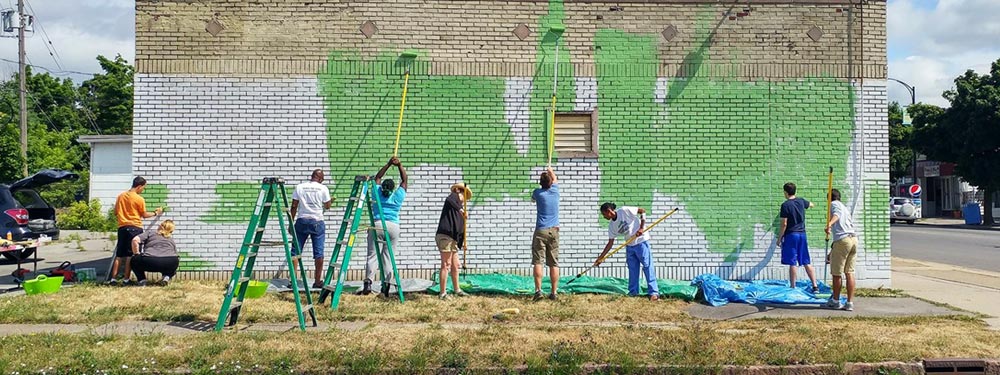

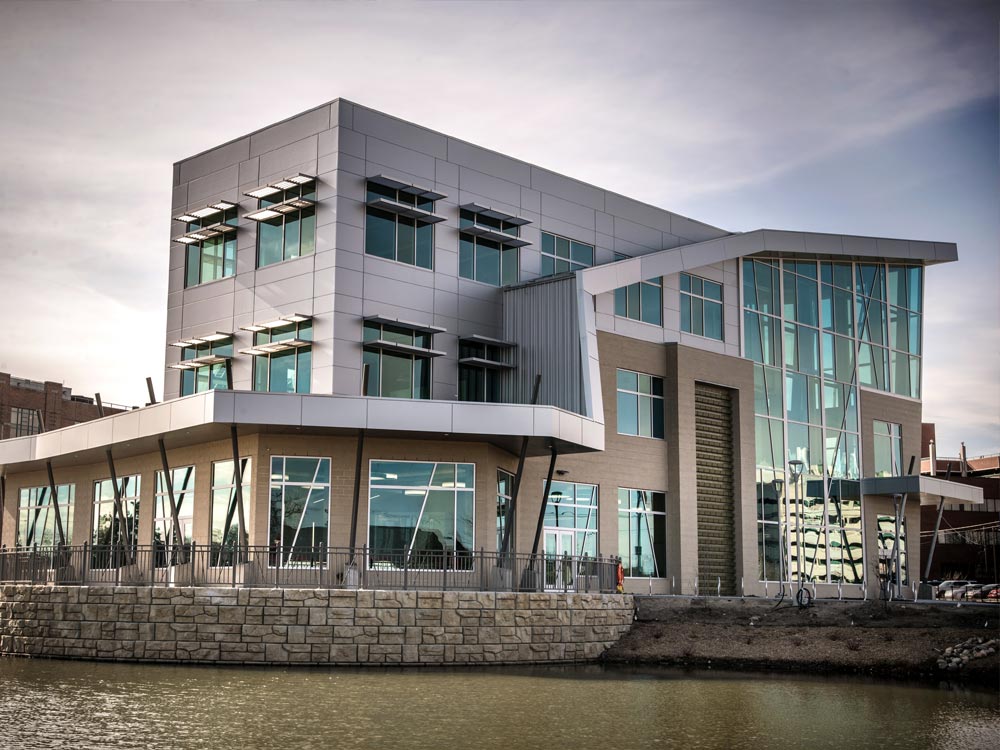
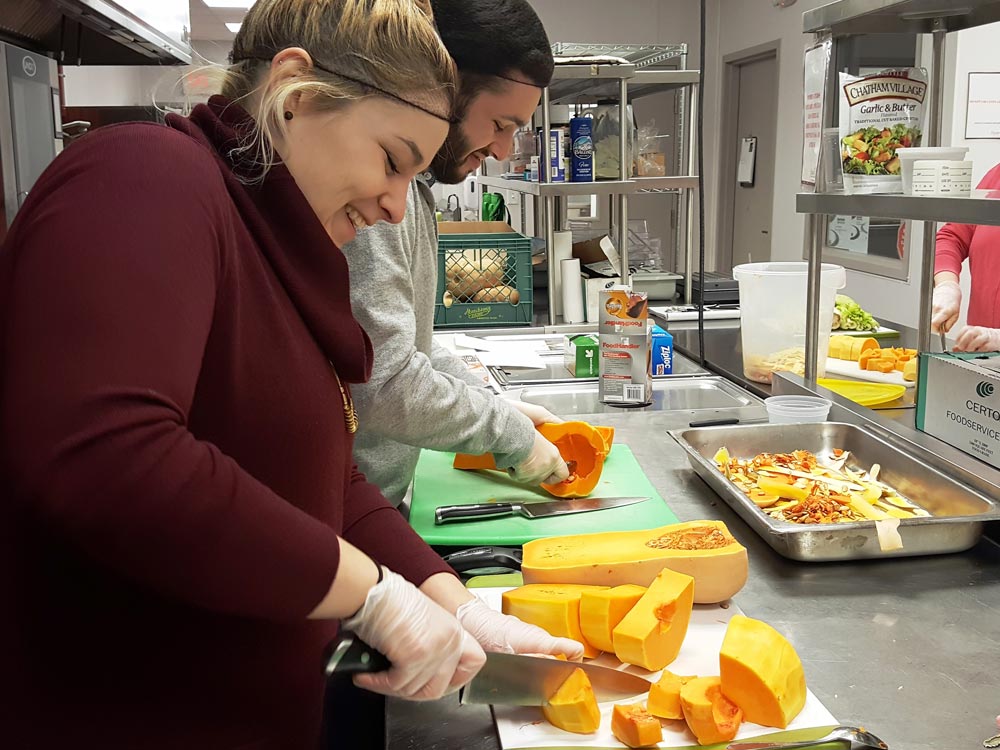
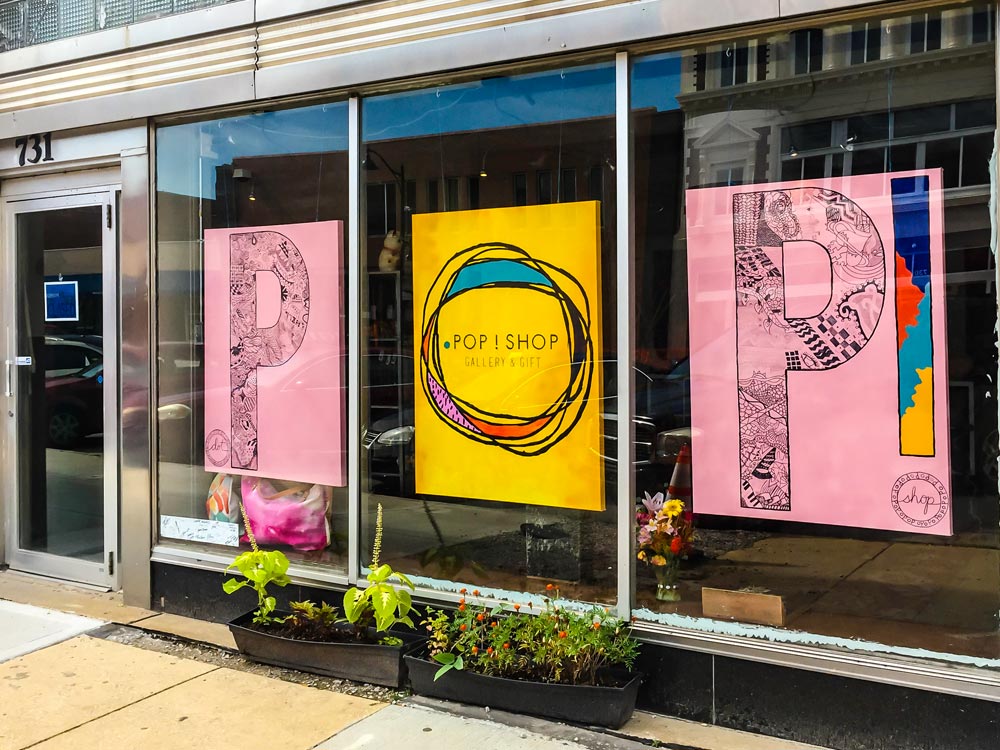


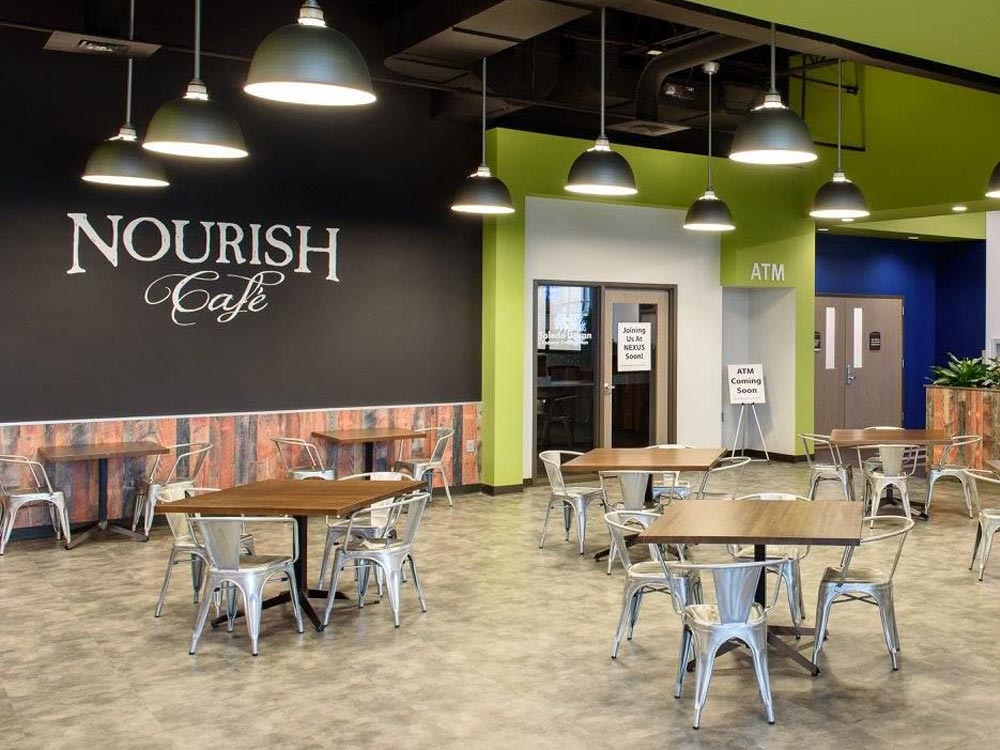
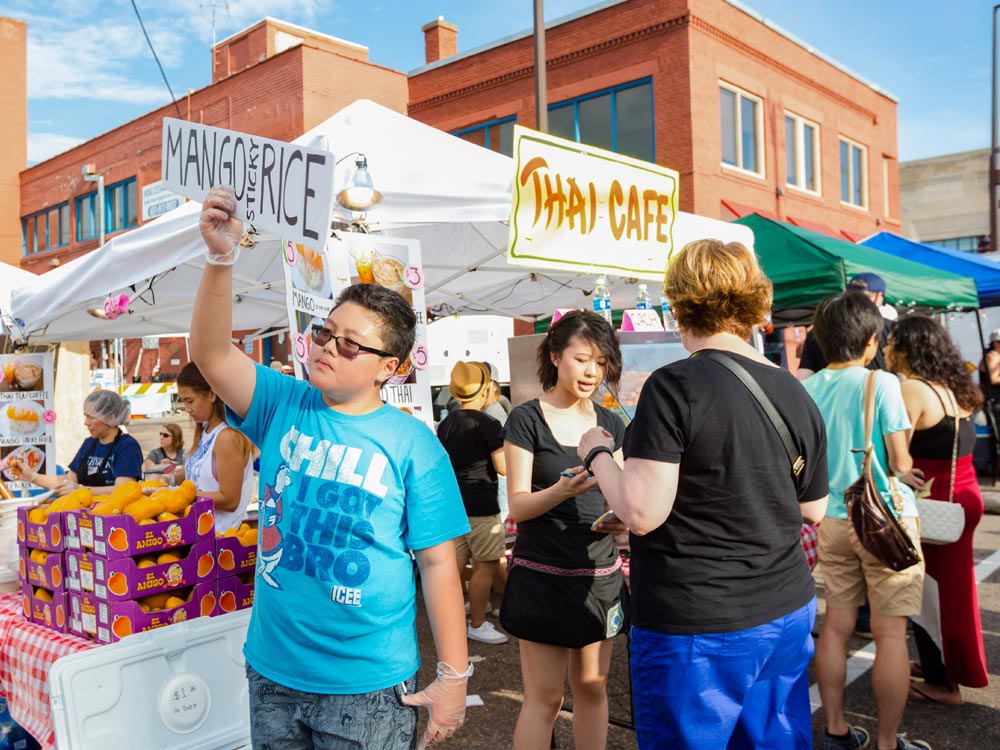









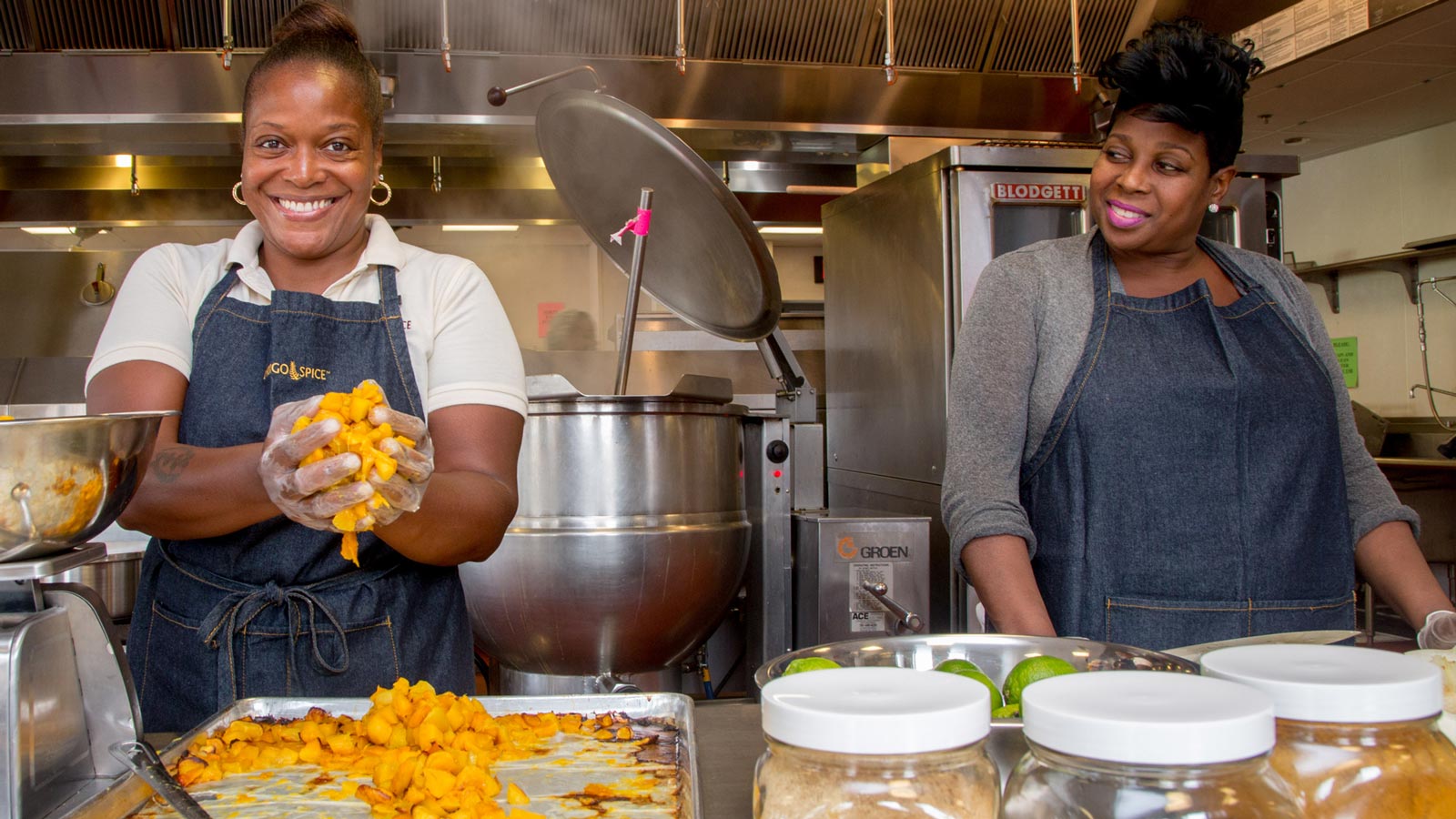

Connecting local entrepreneurs and businesses to an institution with big purchasing power is a win-win proposition that benefits entire communities. It provides goods and services to an organization that needs them, and creates jobs and keeps money circulating in local places. That’s the goal driving Impact Lending, a partnership that LISC Boston and LISC’s affiliate, the New Markets Support Company, created with Northeastern University. Impact Lending is a $6.5 million loan fund designed to increase the university’s contracting with women and minority businesses in the area, and to open doors to opportunity for those businesses.
Focused in the low-income Boston neighborhoods where LISC has long been investing, and supported by a $2.5 million commitment from Northeastern, the two-year pilot program offers loans of up to $1 million to small local businesses that might not qualify for traditional bank loans. LISC provides potential university vendors and other qualified businesses with guidance on strategic growth, preparing them to take on bigger jobs and clients. At the same time, LISC works with the university’s procurement team, departmental decision-makers and others to identify contracting opportunities and match them with local businesses that are primed to succeed.
LISC’s capital and support is helping businesses from Boston to Brockton and Attleboro to Worcester grow and become poised to compete for contracts with Northeastern. This has already paid off for entrepreneurs like Celeste Croxton-Tate, the founder and chef behind Lyndigo Spice, a line of Dorchester-made chutneys and spice rubs. LISC connected Croxton-Tate, who works nights as a Boston police officer, with a Kiva loan to take her business to the next level of visibility and output. Croxton-Tate has expanded from selling online only into farmers markets all over Greater Boston, and her products are now on the shelves of six local retailers, including Whole Foods.
The success of these local businesses creates more jobs, which in turn expand economic prospects for the whole community. In the process, Impact Lending is creating a replicable strategy to link local businesses with medical and educational institutions in other neighborhoods, and break down barriers for women and minority vendors.
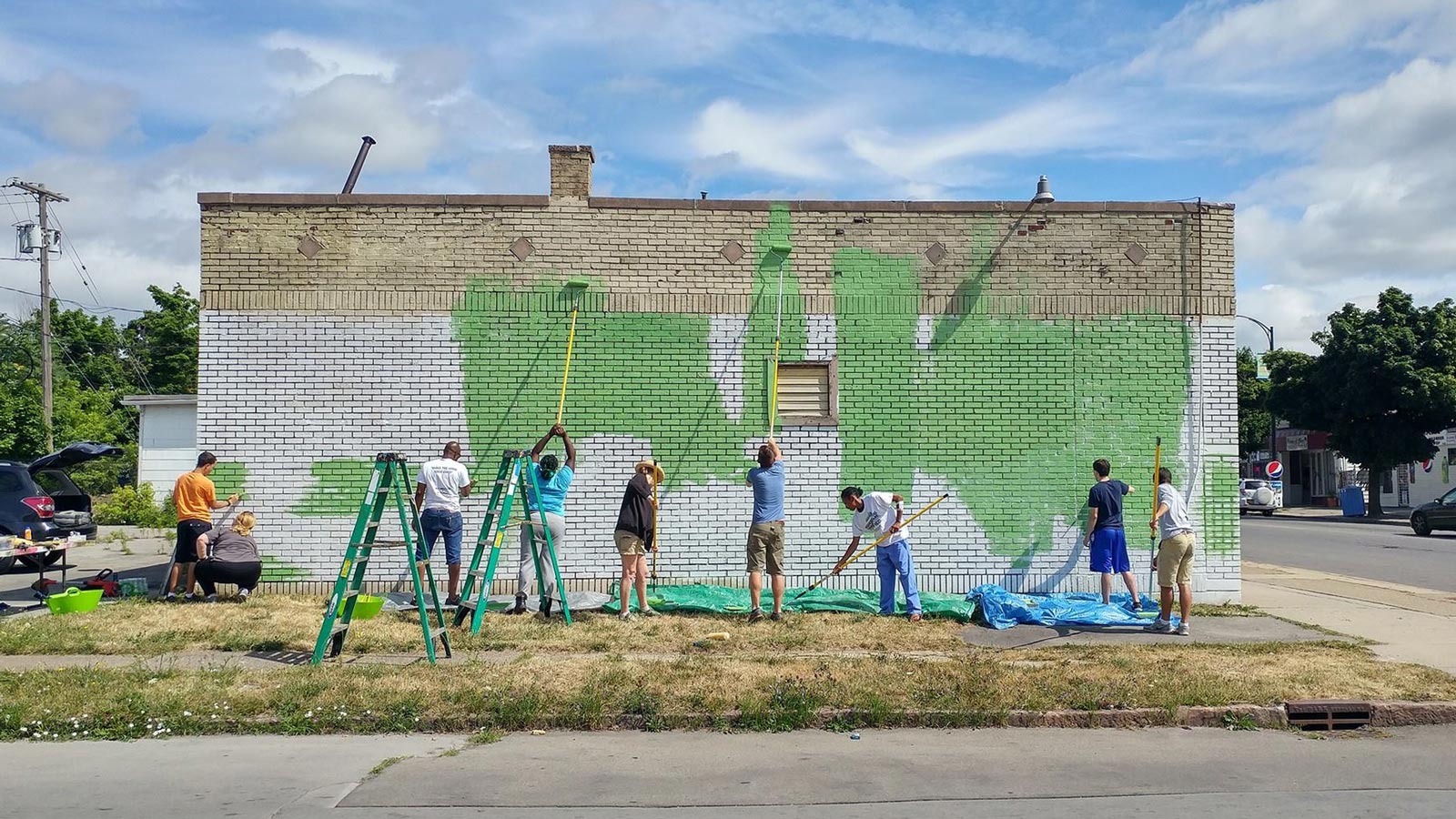

Vibrant, mixed-use, high-density neighborhoods, with a special emphasis on lively commercial corridors: that’s the goal of the Buffalo Main Streets Initiative, a New York State program created to fund the revitalization of the city. And it’s LISC Buffalo’s goal, too.
In fact, LISC has made sure the initiative is getting a solid foothold in the city by providing grants, technical assistance, and market analyses. As result, Buffalo nonprofits have received a total of $1.9 million in Main Streets Initiative funding. Combined with three-to-one matching funds from building owners, this will leverage a minimum private investment of $4.85 million in Buffalo neighborhoods that need it.
One of these organizations is the University District Community Development Association, a longtime LISC partner that has been working since 1976 to improve housing, services and economic prospects for Buffalo’s Bailey-Kensington residents. LISC provided the group with $77,000 in grant funding for staff salaries as well as a market assessment that helped the organization successfully apply for $320,000 in state funding.
With the award, the University District nonprofit is working to reduce blight and transform Buffalo’s Bailey Avenue streetscape through façade renovations, new signage and lighting, interior upgrades and streetscape enhancements. The project provides a critical infusion of capital and gives owners a chance to make significant improvements to their properties.
“We had seven business owners who said, ‘Here’s what I want to do: If I’m able to access this grant, I’ll be able to push that forward,’” said Darren Cotton of University District. “Now we’re in a position to get more people engaged.” The Main Streets Initiative has offered a unique opportunity for LISC partners to access valuable resources that are hard to come by, and to concentrate their work and investments on initiatives that help local small businesses.
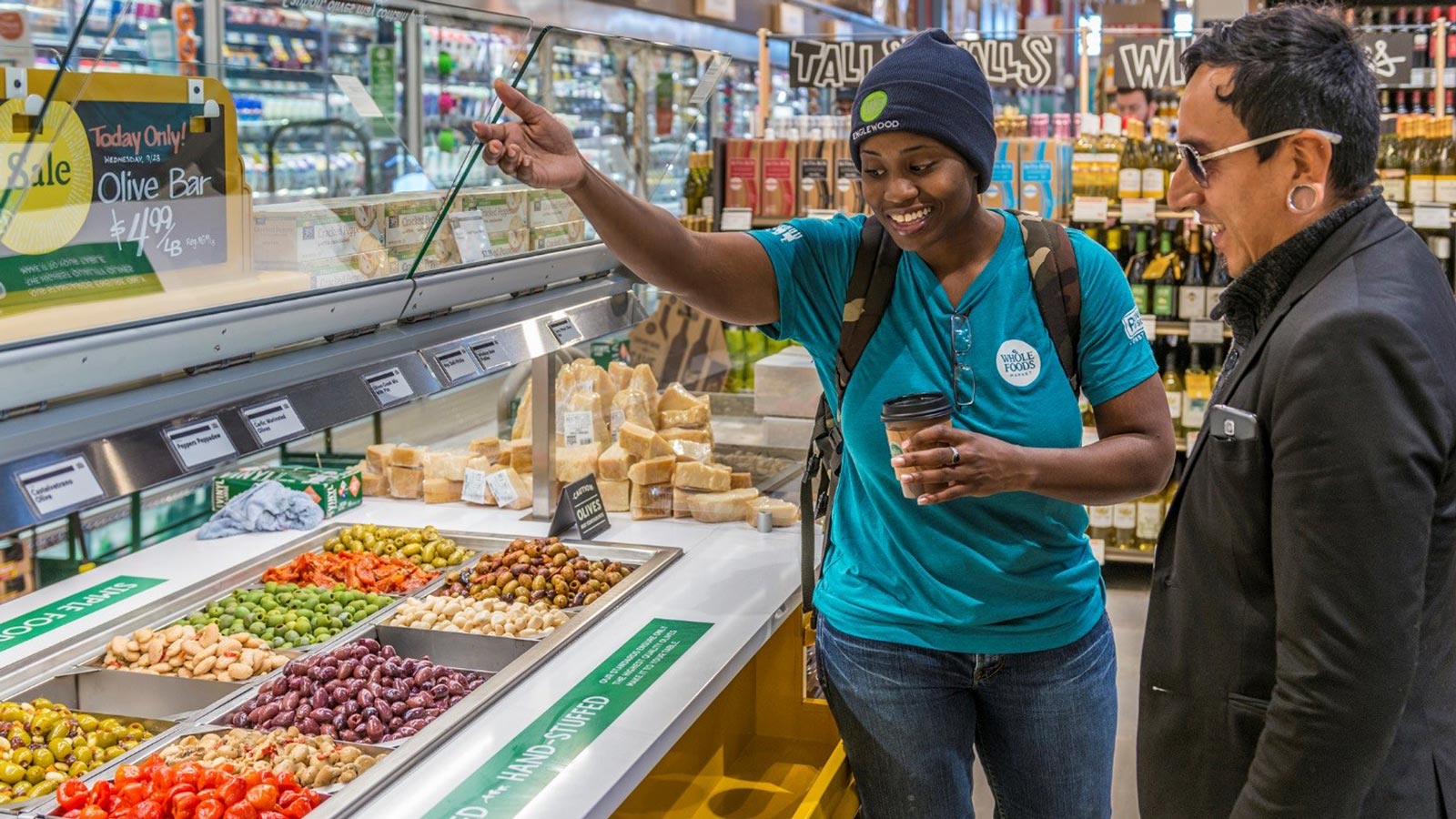

In the often-overlooked communities south of downtown and west of Chicago’s Dan Ryan expressway, a new model for economic development is offering promising opportunities for residents.
The Southwest Commercial Collaborative (SWCC) is a ground-breaking partnership between LISC, the city of Chicago, neighborhood nonprofits, corporations, funders and residents. The effort will drive investment in economic development along key commercial corridors that run through four communities—all of which are working together on a common plan. LISC has committed to invest $50 million over the next 10 years that will leverage additional public and private funds.
The goal is to invest in real estate, businesses and people in ways that make neighborhoods stronger and connect them to the broader regional economy, according to LISC Chicago’s executive director, Meghan Harte. SWCC plans to create more than 700 jobs by attracting new businesses, supporting and expanding local small businesses, transforming blighted land, improving nearby housing and helping residents develop the skills they need for living wage jobs.
LISC helped organize and seed the effort with $500,000 in planning funds—drawing on its decades of investment and long-standing community engagement in the area. The SWCC vision includes projects that will not only create living wage jobs but will make commercial areas walkable and safe, noted Carlos Nelson, executive director with the Greater Auburn Gresham Development Corporation, a partner in the effort.
“This is the tip of the iceberg of good things happening in our community,” said Perry Gunn, executive director of the nonprofit Teamwork Englewood, another partner. He pointed to the early gains from recent activity, including a new Whole Foods, which is both employing people from the neighborhood and working with local entrepreneurs to sell their products.
“SWCC highlights the need for a targeted approach to economic development across neighborhoods and, ultimately, will demonstrate the benefits of that approach to communities and the city as a whole,” said Jeff Bartow, executive director of Southwest Organizing Project, another partner.
As if to prove the point, the 10-year SWCC plan began attracting private investment almost immediately after its announcement. “It fills a vacuum,” Harte said, “and offers a community-driven framework for future investment.”
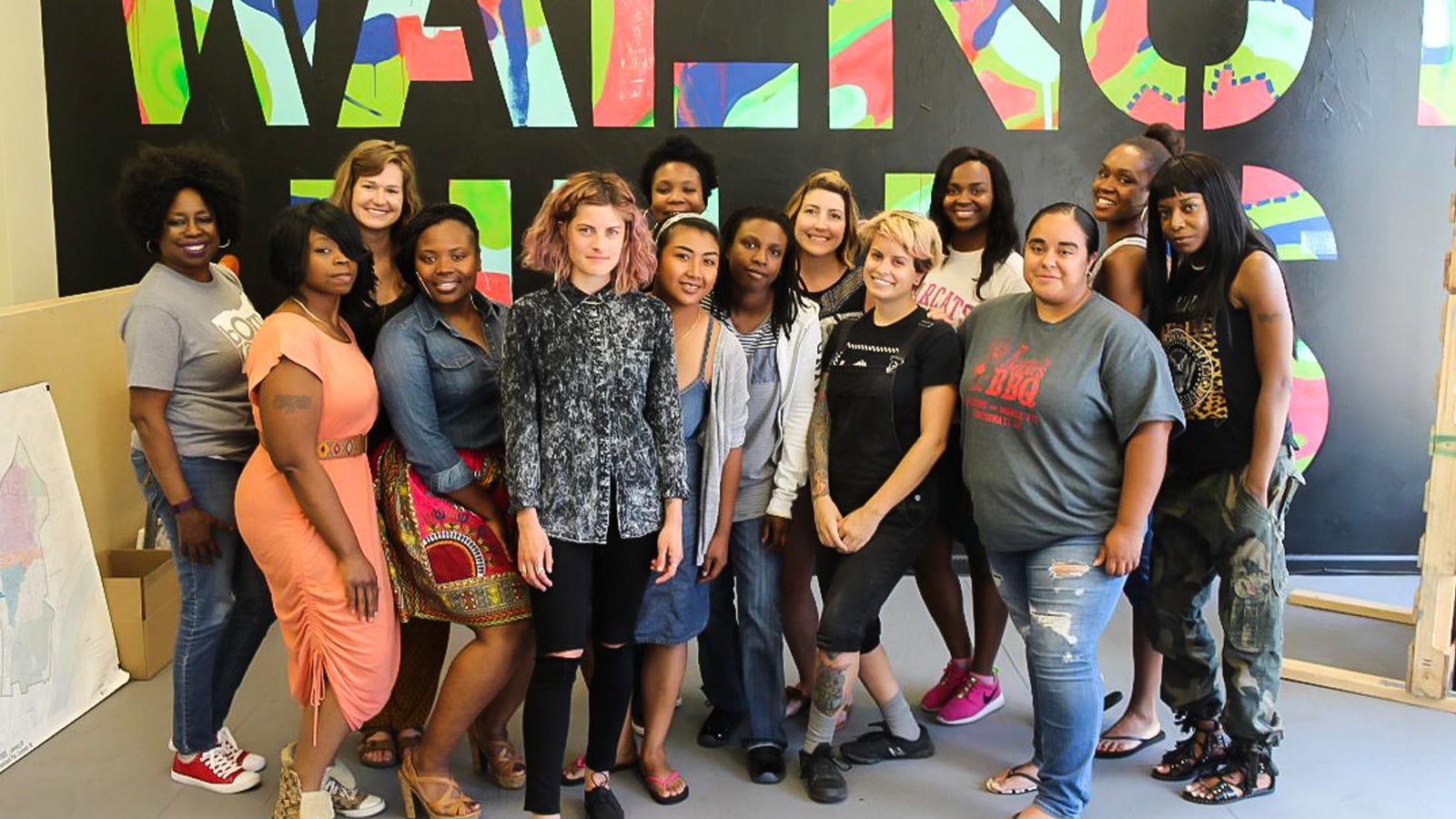

The Walnut Hills neighborhood of Cincinnati is changing fast. Investment is pouring in, bringing with it new retail, market rate apartments and a fast-paced local economy. To help existing residents compete and maintain a foothold in Walnut Hills, LISC has partnered with the Walnut Hills Redevelopment Foundation and MORTAR, a nonprofit that builds community through entrepreneurship.
Together the partners have rolled out a joint venture aimed at training residents with entrepreneurial spirit and ideas for small businesses. By the time they leave the program, those entrepreneurs have the skills and connections they need to get their ideas off the ground. A recent round of training targeted Walnut Hills women who hoped to start creative enterprises.
The entrepreneurship course, run by MORTAR staff, includes business and legal support, brand development, one-on-one mentorship, and opportunities to pitch ideas to potential investors, community leaders and customers. Established creative entrepreneurs, like the owners of Indigo Hippo, an art supply store that offers arts education, serve as ongoing mentors for graduates of the program. In addition to technical assistance and staff hours, LISC made a $15,000 grant to the project.
Jasmine Ford, 24, is a recent trainee who is poised to open her first storefront bakery, Jazzy Sweeties, in a space in Walnut Hills that she secured with the help of MORTAR and a loan from Kiva, the nonprofit online lender that targets budding, low-income entrepreneurs, matched by LISC. Ford recently recalled how far she felt from reaching her goal when she began the MORTAR program a year ago: “I had posted a picture on Facebook with the caption ‘Watch me make my dream a reality,’” she said. “It happened. I’ve come a long way.”
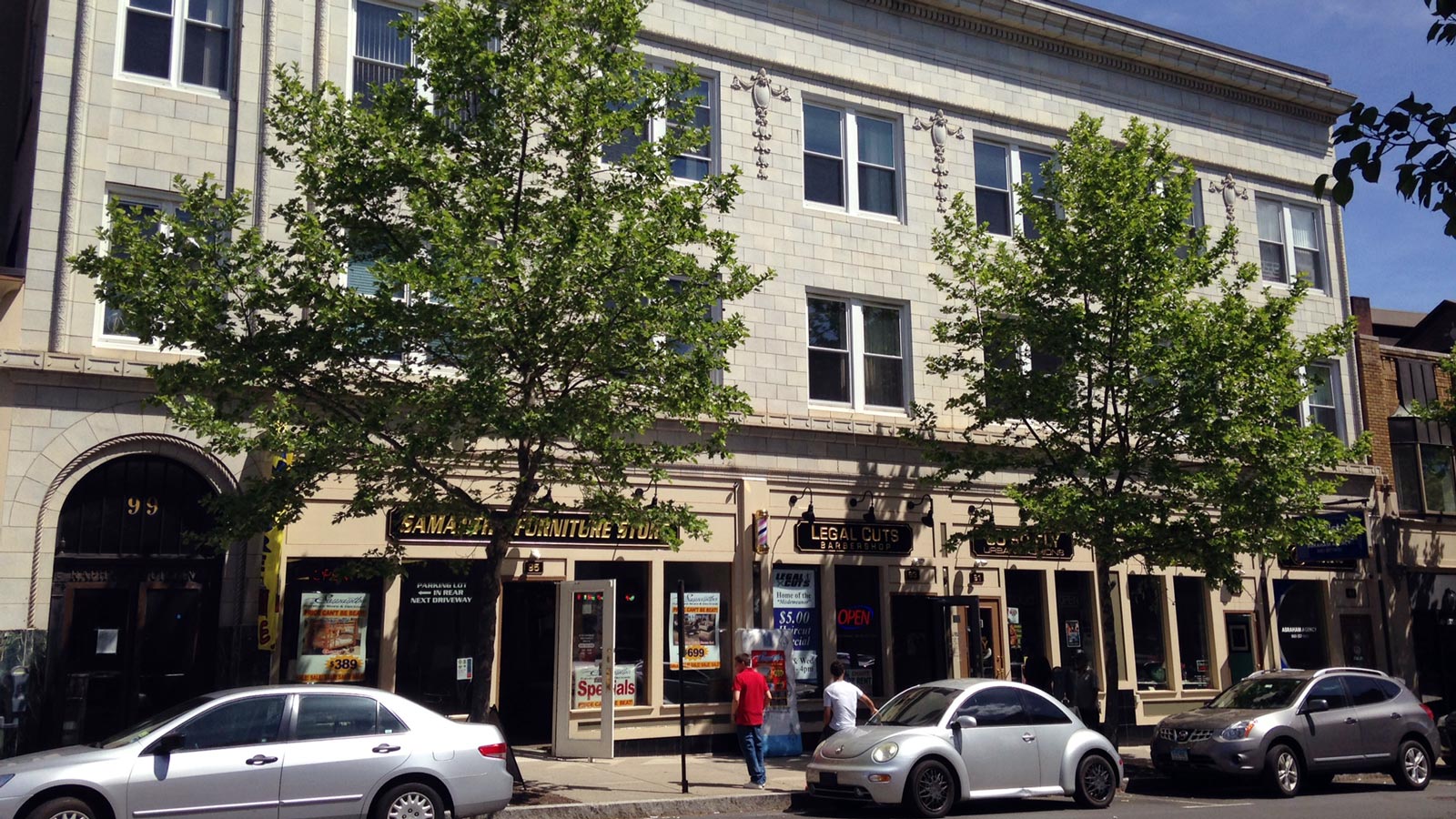

The residents of many of Connecticut’s formerly prominent manufacturing towns are all too familiar with the effects of job loss, population shrinkage, and declining tax bases. When LISC partnered with the Connecticut Main Street Center to implement the Come Home to Downtown program, the goal was to address these issues and spur economic growth by promoting mixed-use and residential development in Connecticut’s commercial corridors.
To support investment in Come Home projects, LISC and the Connecticut Main Street Center created a loan pool, which was capitalized with $1 million from the Connecticut Housing Finance Authority. LISC is the loan fund’s designated lender, and in 2015 and 2016, LISC approved two $50,000 predevelopment loans for revitalization projects in the towns of New Britain and Meriden. Both projects will support the renovation of historic downtown buildings, which will have first-floor commercial space with apartments above. LISC also provided substantial technical assistance to each property owner.
These investments have made it possible for the building owners to do the predevelopment work necessary to secure historic tax credits and other forms of project financing. These projects have helped to build momentum for the revitalization of commercial corridors in Connecticut’s small cities and are demonstrating how investment in historic assets can help to celebrate the identity and culture of America’s small towns.


Patient, flexible financing is sometimes the difference between a flourishing expansion of local opportunity and continued stagnation.
In the Milwaukee Junction community of Detroit’s North End, a $700,000 loan from LISC has helped transform an aging, 38,000-square-foot manufacturing facility into a series of industrial spaces for small- and mid-sized creative and production firms, it’s known as the Dodge Building, and it advances both economic and community goals in the area. Since opening in 2016, it has become home to 15 different creative firms. And it provides community and event space.
Town Partners, LLC, the owner/developer, focuses on providing affordable space to budding entrepreneurs and building a pipeline of design students from local colleges to serve as tenants.
“There is a revival underway in this area,” said Kyle Polk, a principal at Town Partners. “By focusing on work that catalyzes culture in neighborhoods adjacent to Detroit’s city core, the Dodge Building and other projects are helping transform Milwaukee Junction into a unique neighborhood capitalizing on its industrial past.”
Tahirih Ziegler, Detroit LISC executive director, said the Dodge Building redevelopment was an opportunity for the LISC team to engage a new, young development firm willing to uplift the local community of entrepreneurs.
“This isn’t just a building,” Ziegler stressed. “It is a project that is helping to rejuvenate the neglected economic potential of the surrounding area. It is helping make this community a safer, more vibrant, more engaging place to live and work.”


What happens when a long-stagnating commercial corridor is reinvented as a craft manufacturing district? It brings new businesses, jobs, and opportunities for residents.
In Duluth’s Lincoln Park neighborhood, where LISC has long been investing, a grassroots effort started by neighborhood entrepreneurs, known as Advancing Lincoln Park, has been focused on economic development over the last three years. The result is a new destination for urban manufacturing and retail along West Superior Street—one that is having a ripple effect throughout the surrounding residential area.
Instead of empty storefronts and vacant lots, the area is now home to a microbrewery and an outdoor gear company known for its unique canvas bags. A shoemaker has set up shop near a new contemporary barbeque. A manufacturer of motorcycle wear is flourishing as is the Duluth Folk School that builds community through knitting, cooking, woodworking and more. More than 80 classes are offered for residents and tourists to learn a hobby that could become a livelihood.
Since LISC began supporting the craft manufacturing district, a total of 17 new businesses have opened in a neighborhood where incomes range between modest and below the average for Duluth.
LISC worked with the City of Duluth, the Entrepreneur Fund and Ecolibrum3 to invest early capital and build on the promise of pioneering businesses in the area. A new city-funded loan program is helping to solve gap financing so emerging entrepreneurs are attracted to this community of interesting new manufacturers and retailers.
“The Lincoln Park Craft Business District is a great example of how a neighborhood, working on a new vision for its future, can become a good place to do business, simultaneously improving the quality of life for residents,” said Pam Kramer, executive director of LISC Duluth.
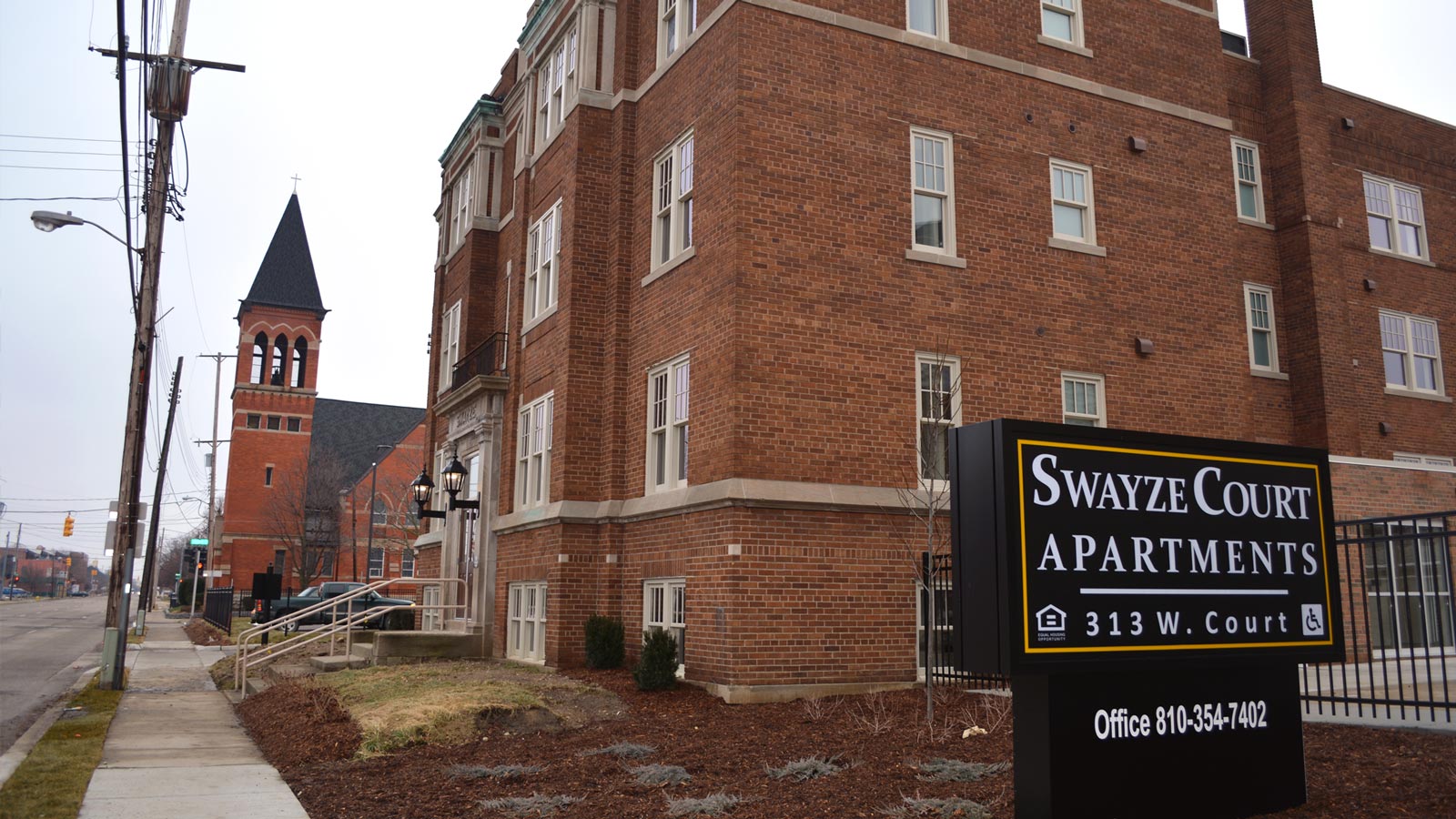

Economic opportunity comes in all kinds of packages. In Flint, MI, an historic brick apartment building that was once home to captains of the city’s automotive industry is now housing the homeless—and creating ripples of opportunity.
An $8.3 million renovation of the Swayze Court Apartments has created 36 affordable homes, 28 of which are permanent supportive units for Flint residents who are homeless, at risk of homelessness or have special needs.
The development has also provided more than 100 jobs for the local community, including for individuals with barriers to employment. These included construction jobs during the rehab, and now consist of case workers, maintenance staff and property management staff within the apartment complex. In addition to the tangible economic benefits of the project in the form of employment, three dozen individuals and families without stable housing now have a place to call home.
LISC’s affiliate, the National Equity Fund, provided $6.3 million in Low Income Housing Tax Credits and historic tax credits to bring the project to fruition. Also key to the work of the nonprofit developer, Communities First, Inc., was capacity building support from LISC and predevelopment funding to determine project feasibility. For Flint, a city that has suffered from decades of hard times and disinvestment, the project sends a striking visual message, too—it is a spiffy, well-maintained building where there was once blight. It has also been nominated to the National Register of Historic Places.
“Developing affordable housing is always challenging and there are never enough resources to meet the overwhelming need,” said Glenn Wilson, president & CEO of Communities First, a LISC partner that headed up the project. “But being able to offer union wages to those who are structurally unemployed challenges the norm in business, and gives opportunities to people who want to work and provide for their families.”
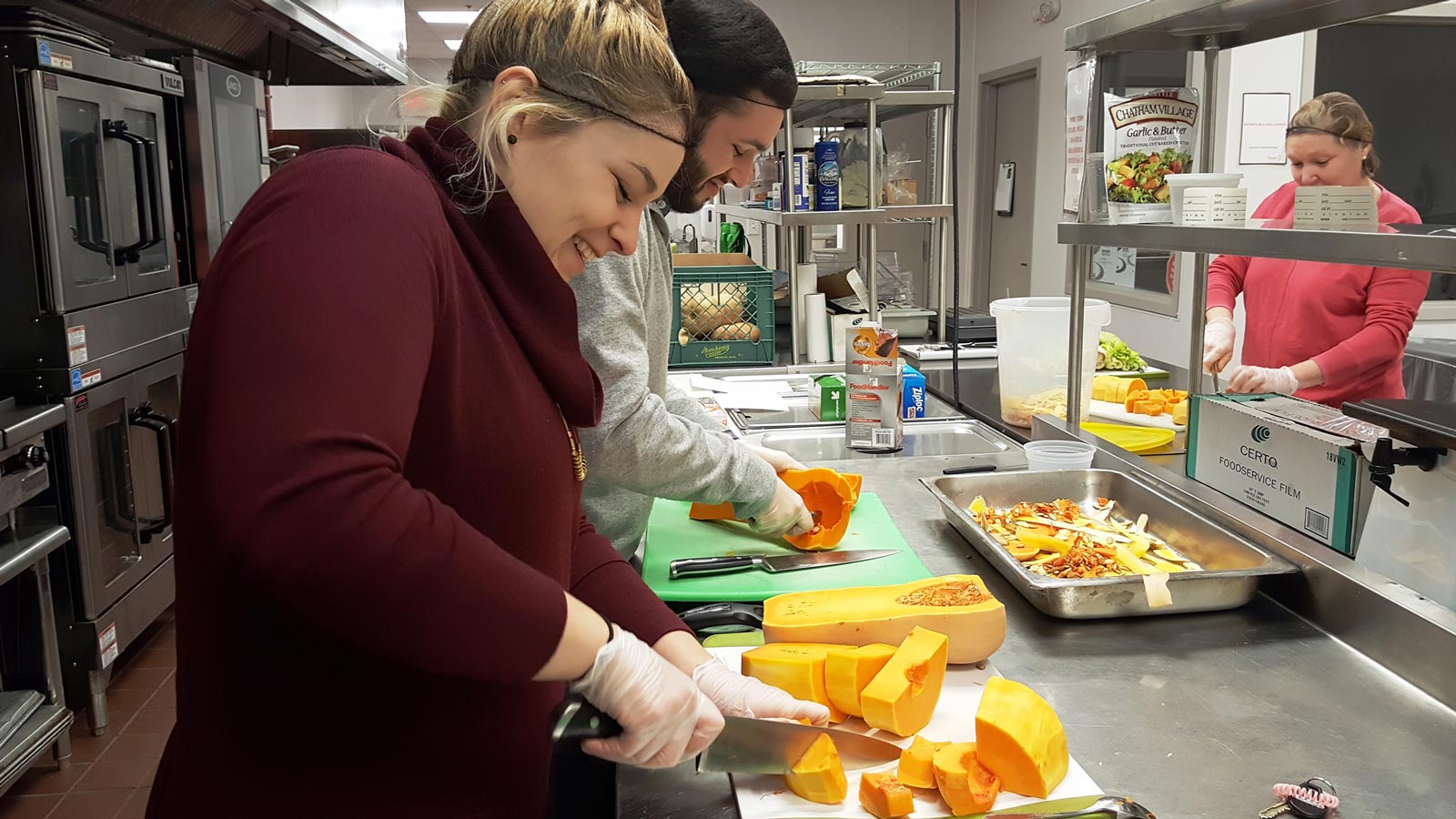

The unemployment rate in Hartford, CT is more than double the national average. To tackle the jobs crisis, LISC has partnered with Hands on Hartford, Inc., a multiservice nonprofit group that improves access to food, housing, and economic security among Hartford’s low-income residents.
In 2016, LISC provided Hands on Hartford with technical assistance and a $20,000 grant that funded a business plan for a 1.4 acre property the organization owns in Hartford’s Parkville community. A market study showed that the diverse, growing neighborhood lacked retail establishments to attract new residents and employers. Hands on Hartford saw a big opportunity there: one of the buildings on its property contained a renovated commercial and café space and is conveniently located just a block from Parkville’s new CTfastrak public bus station.
LISC funds helped Hands on Hartford devise a café and training program to offer food service skills and full-time job experience to formerly homeless individuals, helping them build their resumes and other resources for self-sufficiency. The Café at Fifty-Five opened last fall and has already trained staff and provided several jobs. As part of its mission, over the next four years, the café expects to bring on a total of 175 volunteers and hire an additional 20 staff. The Café at Fifty-Five also has already become a beloved community gathering place, serving breakfast and lunch in an area with few restaurants, and earning kudos for its sweet and savory crepes and killer cappuccino.


Houston’s burgeoning economy is in dire need of skilled workers. And the 15 percent of Houstonians living below the poverty line need good-paying jobs to climb into the middle class. LISC’s longstanding partner, SER-Jobs for Progress, has a strong track record of helping people land middle skills jobs in growing industries. Now, thanks to a $3.2 million bridge loan and an $8 million New Markets Tax Credit investment from LISC, SER will soon inaugurate a state-of-the-art workforce center, doubling the organization’s capacity to train prospective employees and offer financial coaching.
SER is already home to the largest of Houston LISC’s five Financial Opportunity Centers. SER serves some 500 clients a year, and a Bridges to Career Opportunities program that helps residents prepare them for jobs in specific industries such as welding, construction, banking and office support. With the new Workforce Opportunity Center, which will include a “career café,” employment and youth services, classrooms and training labs, SER expects to support 10,000 clients a year on the path to financial stability.
The center is also strategically located at the crossroads of several communities where Houston LISC invests in neighborhood infrastructure, and near a range of industrial hubs such as petrochemical, manufacturing, construction, healthcare and the Port of Houston’s maritime operations.
You don’t have to look far to see the kind of impact SER makes on the lives of its clients and in the surrounding community. Take Emilio Parker, who had been in and out of prison for most of his adult life before he connected with the organization and graduated from its job readiness program. Today, Parker is a reintegration specialist with SER, coaching other formerly incarcerated people to navigate the work world and prepare for a living-wage position.
“Without SER giving me a chance to do something different, I might not have made it this far,” said Parker. “The new [Workforce Opportunity Center] will give a lot more people the chance to make a different kind of life for themselves.”
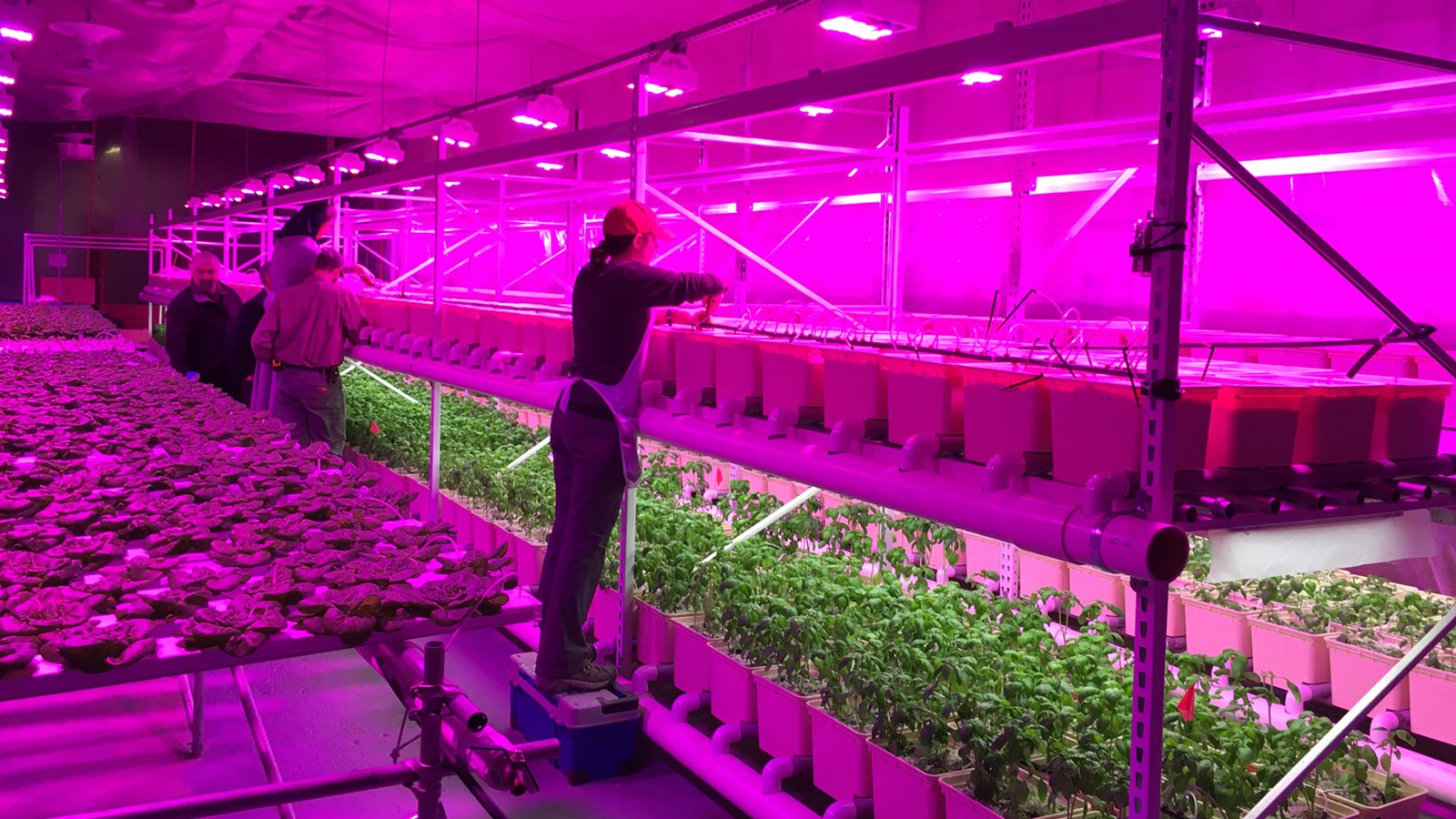

Indianapolis’ Farm 360 is a hydroponic urban farm that grows organic crops year-round, while revitalizing a low-income neighborhood in the city’s near eastside. It was created to spur sustainable employment opportunities and healthy food production in a community that was desperately in need of both.
The indoor farm uses high-tech agricultural methods and a climate-controlled environment that produce a high and predictable yield of quality food. Using 90 percent less water than traditional farming, Farm 360 has the production power of 15 acres of land, condensed into a 61,000-square-foot, formerly abandoned warehouse. It currently grows 25 varieties of vegetables, including basil, mint, kale, lettuce, spinach, chard and arugula.
Most of the produce is distributed through local grocery stores, and Farm 360 employees may take food home as part of their compensation. People can also purchase vegetables on site.
Any produce that doesn’t sell is donated to a local food bank. “Food security is a big part of lifting up a community,” said Chris Arnold, Farm 360 general manager.
The Farm 360 warehouse was purchased using half of a $500,000 CDBG grant from the City of Indianapolis and supplemented with more than $400,000 in LISC investments including a mini-perm loan, a façade grant and a $100,000 project initiation loan.
“One of our visions is to hire people who need a second chance,” said Arnold. “Four of our employees have come directly out of incarceration and they are a welcome addition to our team.”
In a neighborhood that suffers from a 47 percent poverty rate and 24 percent unemployment rate, Farm 360 has created 14 living-wage jobs to date, with the majority of employees hailing from the eastside community.
The urban farm is part of a $3.7 million redevelopment project with partners from all levels of government. It is designated a HUD “Promise Zone,” a LISC Great Places 2020 neighborhood, and a LISC Indianapolis FOCUS District. LISC Indianapolis was involved from the start and supported the project through funding and site selection and by linking Farm 360 with the Englewood CDC, a strategic partner that has helped connect Farm 360 to the community.
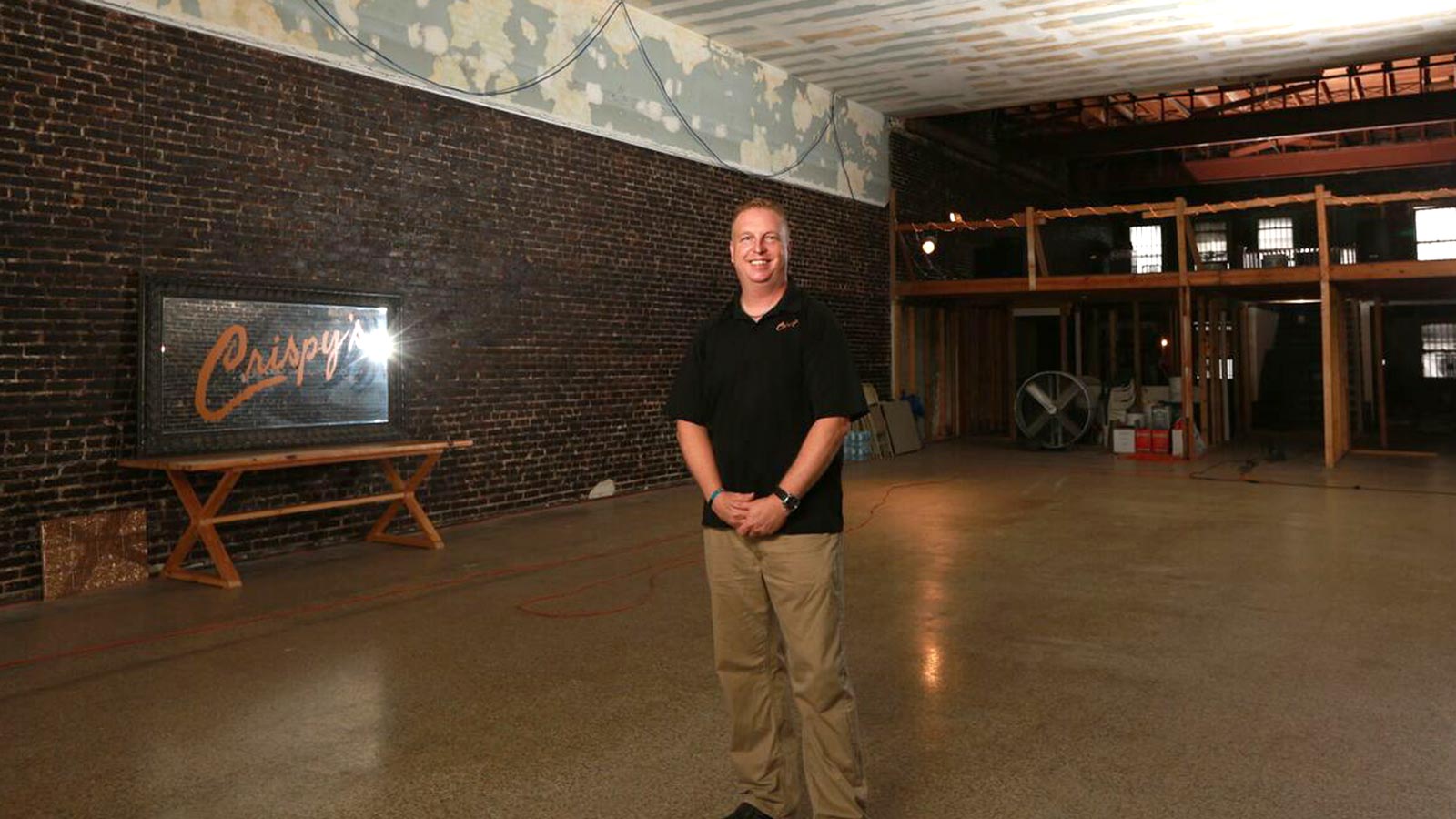
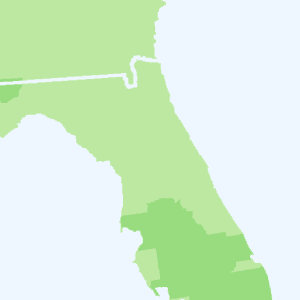
The historic Jacksonville neighborhood of Springfield occupies a spot on the National Register of Historic Places and, after decades of neglect, has been called the South’s number one “comeback” story. But in spite of the attention to the district’s gorgeous 19th- and 20th-century residential architecture, Springfield’s commercial corridor has been likened to a ghost town because of the number of abandoned restaurants and storefronts, including a vacant grocery store. It’s a Main Street in sore need of steady activity and opportunities for new businesses and good jobs for residents.
Working with the nonprofit group Springfield Preservation and Restoration Council, SPAR, LISC Jacksonville has committed to boosting economic development in Springfield, funding a Metroedge corridor assessment and a market scan that gauged what it would take to turn the Main Street around.
LISC injected $75,000 for a development consultant and grants for physical improvements along the corridor and civic engagement. Early action grants in partnership with Wells Fargo helped bring a crime reduction program to the neighborhood as well as decorative banners and bike racks to promote a greener, bike-friendly community.
The return on that investment? A slew of new businesses are opening along Main Street, which will bring visitors, commerce and significant fulltime job opportunities to the neighborhood. Leading the way are two locally-owned craft breweries, Hyperion Brewing Company and Main and Six Brewing Company which, between them, will create a minimum of nine fulltime jobs. The soon-to-launched Crispy’s restaurant will ultimately employ as many as 20 people, just down the street from a mixed-use retail/housing project known as Third and Main.
SPAR, with LISC’s support, has assisted all of these businesses and many others with land use and zoning challenges, lease review and outreach to the community in preparation for opening. Now, Springfield’s corridor has a comeback story of its own.
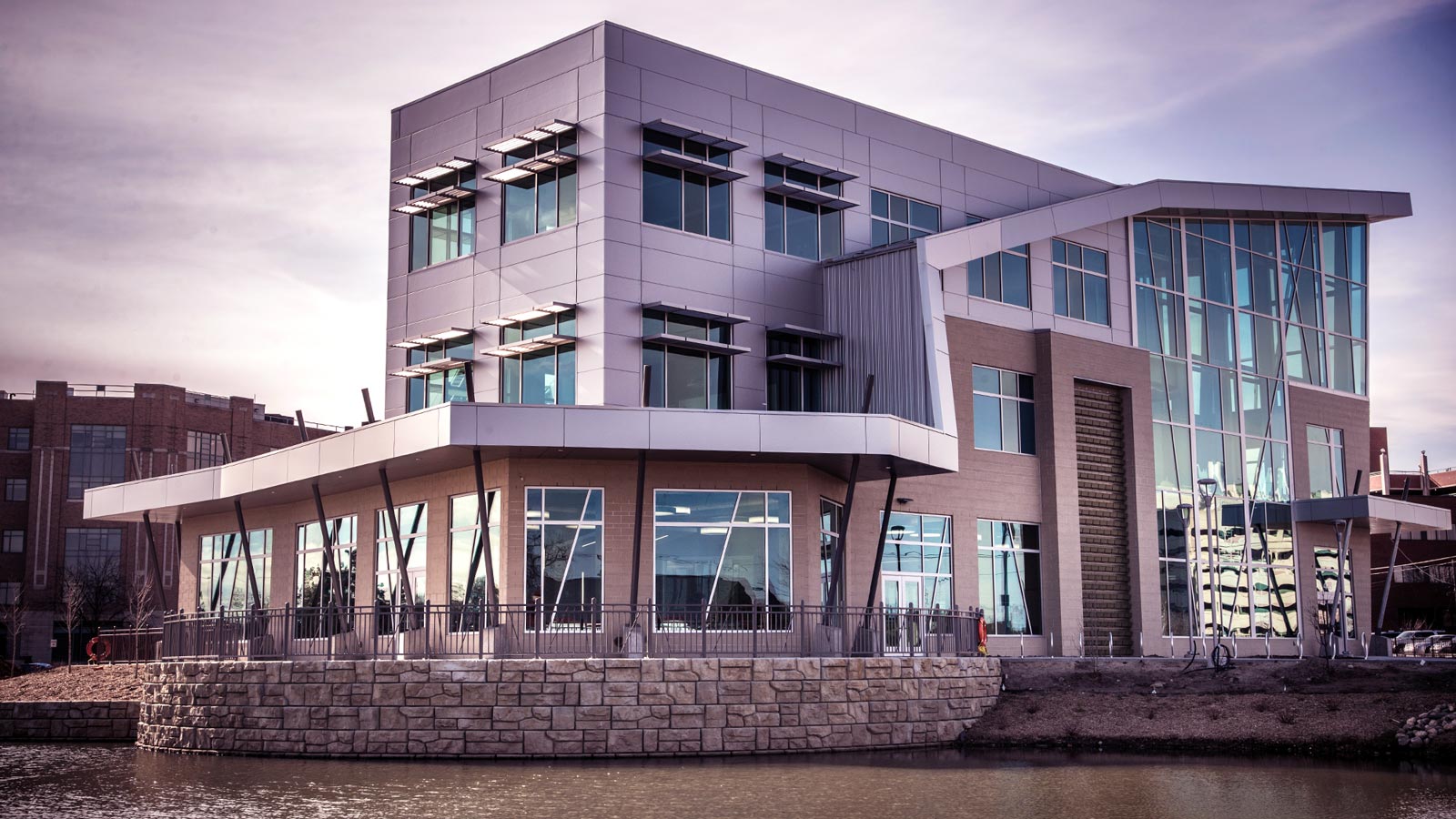

Once upon a time, in the mid-20th century, Kalamazoo’s Washington Square was a lively streetscape. It buzzed with commerce, social life and the clang of trolley cars. But for the past 50 years, this historic quadrant of the Edison neighborhood has suffered from job loss, vacant buildings and deteriorating business prospects.
To revive the area and make it a place of opportunity for residents, Michigan LISC has joined forces with long-time partners including the Kalamazoo County Land Bank, the Edison Neighborhood Association, the city of Kalamazoo and a range of local businesses and nonprofits.
The partners developed an ambitious plan to redevelop a number of high-profile buildings while making façade improvements to others, including better lighting and signage throughout the area.
They replaced some car lanes with bike lanes, and installed a variety of new street furniture, from bike racks and benches to picnic tables and flower pots. They even transformed an old parking lot into community gathering space—adding new trees and bushes, and electrical service, making room for vendors and food trucks and building out an entertainment space.
These efforts are transforming a “vacant and abandoned commercial node into a place where residents, business owners and community members are coming together to shop, dance, enjoy the arts and more,” noted Kelly Clark, executive director of the Kalamazoo County Land Bank. Six new small businesses have opened in the square as a result of community investment and targeted redevelopment efforts.
Altogether, LISC made nearly $800,000 in grants and loans to the project, building on many years of community development work in the area. LISC also tapped more than $18.5 million of its New Markets Tax Credit allocation to support two other local projects—a food innovation hub to the north, at Kalamazoo Valley Community College, and a federally qualified health center focused on underserved populations to the south.
“The Edison neighborhood and Washington Square are experiencing a rebirth,” said Chuck Vliek, executive director of Michigan LISC. “This area feels safer, more vibrant and more welcoming to residents, shoppers and visitors than it did even just a few years ago. It is succeeding because it has been a truly collaborative effort.”
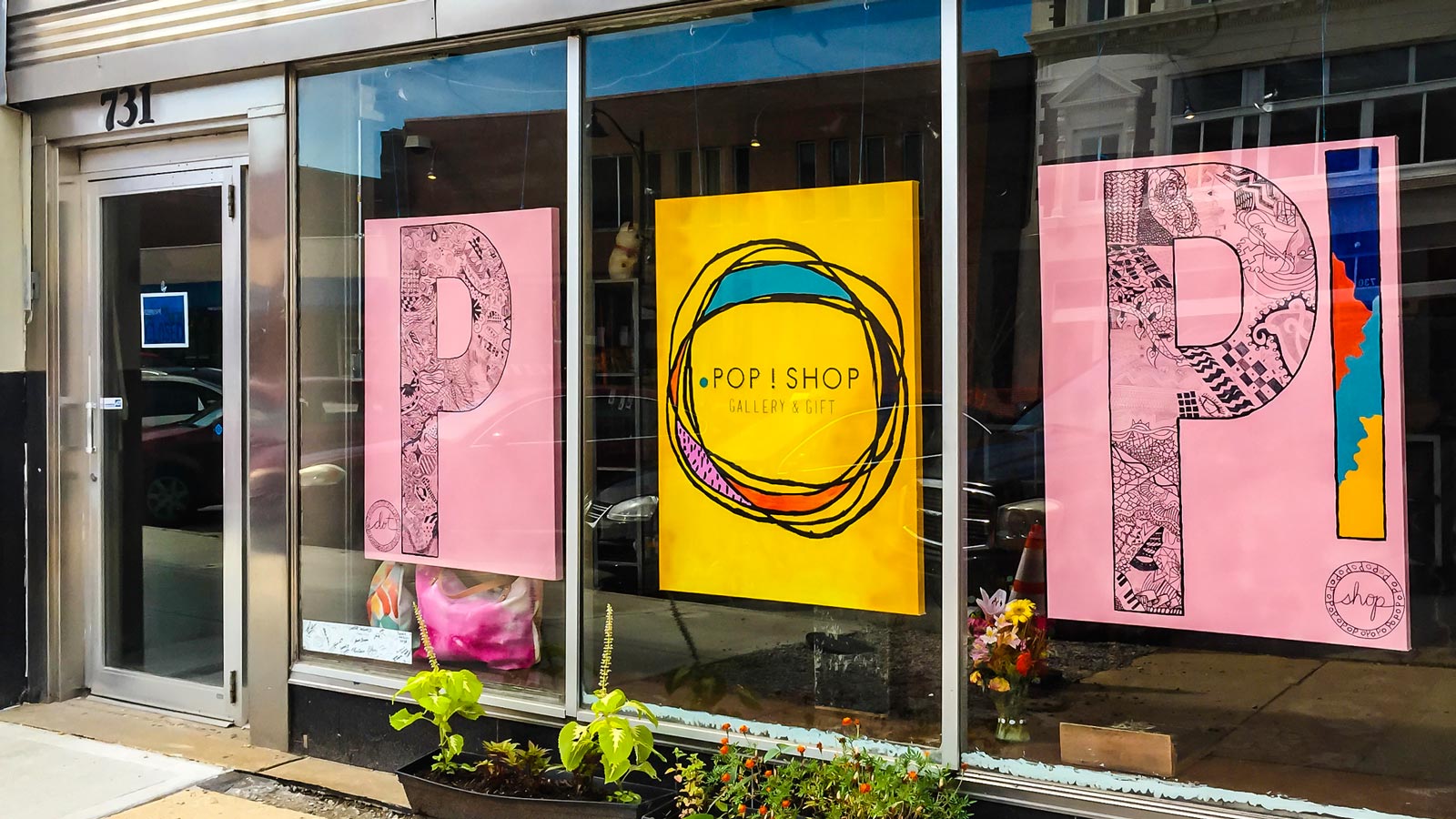

Pop-up retail has become an important tool in the revitalization of flagging downtowns all across the country. The concept is simple: offer free or reduced rent in vacant storefronts to small businesses, and launch the program with a marketing blitz that gives people a reason to go downtown.
LISC Kansas City is giving the strategy a whirl with Pop-Up! Downtown KCK, an initiative that matches local entrepreneurs with high-visibility, well-sited spaces at no or low cost. This allows them to test out a retail concept and determine whether downtown Kansas City is a viable, long-term location for their businesses.
Downtown Shareholders of Kansas City, Kansas, Inc.–a LISC partner and community-led group promoting economic development, housing choice, wellness, and cultural life–is leading the program. Last year alone, LISC provided $61,000 in HUD Section 4 funding to support the executive director and a community coordinator who created the business plan and a small business toolkit. LISC program officers also offered a technical assistance to the pop-up program.
Testing a business as a pop-up for three months before investing in a storefront can make the difference between a thriving enterprise and a failure with serious financial consequences for the entrepreneur. A pop-up allows the business to grow clientele and, at the same time, builds interest and foot traffic in the area.
Kansas City Cupcake Company is a textbook case of just how well the pop-up strategy can work. Owners Celeste and Greg Gant ran a bakery in nearby Mission, Kansas but wanted to try out a downtown location. Without the pop-up program, Celeste Gant said, they wouldn’t have had the resources or confidence to invest in a second shop. But since doing the pop-up program, the Gants have opened a successful, second location with four employees and a steady stream of daily customers.
To date, after testing a pop-up, another business is poised to open downtown, and seven more are in the wings.
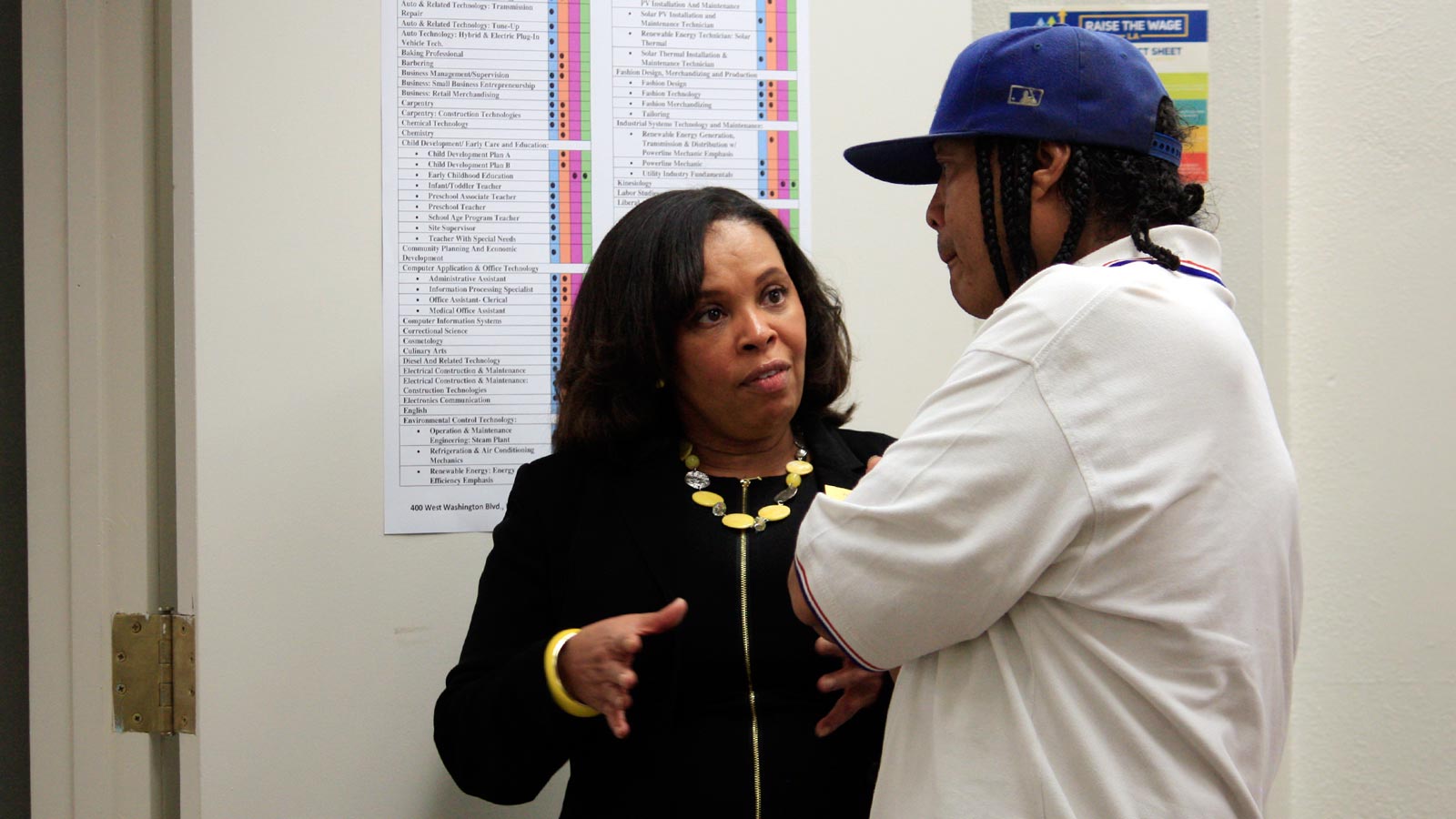

Last year, LA LISC opened two new Financial Opportunity Centers (FOCs) that are already helping low-income Angelinos make profound changes in their lives and economic futures. Each FOC was placed in a community organization that serves a high-needs population, including a large number of formerly incarcerated individuals and people with limited English proficiency. Both organizations, Coalition for Responsible Community Development (CRCD) and Youth Policy Institute, already ran city-funded WorkSource Centers, which meant that employment coaching and job referral services were readily available onsite.
In 2016, LA LISC awarded $180,000 in HUD Section 4 grants to support the capacity of the FOCs, and offered training and technical assistance to supervisors and coaches. LISC’s AmeriCorps program also placed a member with each site to serve as a financial empowerment coach.
FOC clients credit their coaches with helping them move mountains. Take Dianifer Rodriguez, an immigrant from Columbia, who participated in a WorkSource Center bank teller training that led her to the Youth Policy Institute’s FOC. Rodriguez was so inspired by her experience that she applied to become a LISC AmeriCorps member and is now helping others at the FOC herself.
Another FOC champion is Steven Howell, who ran an auto detailing business in northern California before getting caught up in the criminal justice system where he spent 20 years of his life. A prison program moved him to the Los Angeles area, where he had no friends or contacts to help him rebuild. But Howell connected with CRDC’s FOC, and began putting his energy toward building a better life.
Thanks to his own dedication and that of his coaches, Howell re-opened his auto detailing business, calling it “Hidden Treasures,” a name he says was inspired by his work with the FOC team, whom he views as family. Hidden Treasures “reveals the beauty beyond,” said Howell. “So it’s not just about one’s car, but one’s life.”


Journey House is a large neighborhood center on Milwaukee’s south side with a mission of empowering families to move out of poverty through adult education, youth development and workforce readiness. Journey House also runs one of Milwaukee’s two Financial Opportunity Centers (FOCs), along with a YouthBuild program which trains at-risk youth in construction trades while helping them complete their high school diplomas.
The layered services offered at Journey House dovetail with LISC’s comprehensive approach to promoting financial stability. In 2016, LISC invested $120,000 in FOCs in Milwaukee.
Among last year’s YouthBuild trainees who received FOC coaching were four young men, Dra’Vonn Bankhead, 21, Rafael Espino, 20, Javier McCants, 21 and Angel Mercado, 18. Each participated in multiple programs at Journey house and, in turn, each went on to give back to the organization and the community. While honing their carpentry and masonry skills, Bankhead, Espino and Mercado began demolition to prepare ground for a new housing complex for young people aging out of foster care that Journey House is building adjacent to the neighborhood center.
They also worked as concessionaires at an NFL Foundation field funded through LISC, advancing to supervisor positions and overseeing 135 young workers in the city’s summer youth program. The young men so impressed the director of Journey House that she created a fellowship which is grooming them for permanent positions.
All this training and work has coincided with financial and employment coaching through the Journey House FOC. “Before this, I never managed money at all,” said Bankhead. “I learned that I didn’t have any credit, and what I need to do to build it. We looked at what I got paid and came up with a budget, and I try to stick to it. Now I’m very, very careful with money.” Each Youthbuild client also has created a resume and professional portfolio.
McCants, for his part (pictured above with his portfolio), is starting a full time job with a local corporation where he will be trained as a welder. “This program motivated me,” he said, of his FOC experience. “Now I know I can accomplish the things I want.”
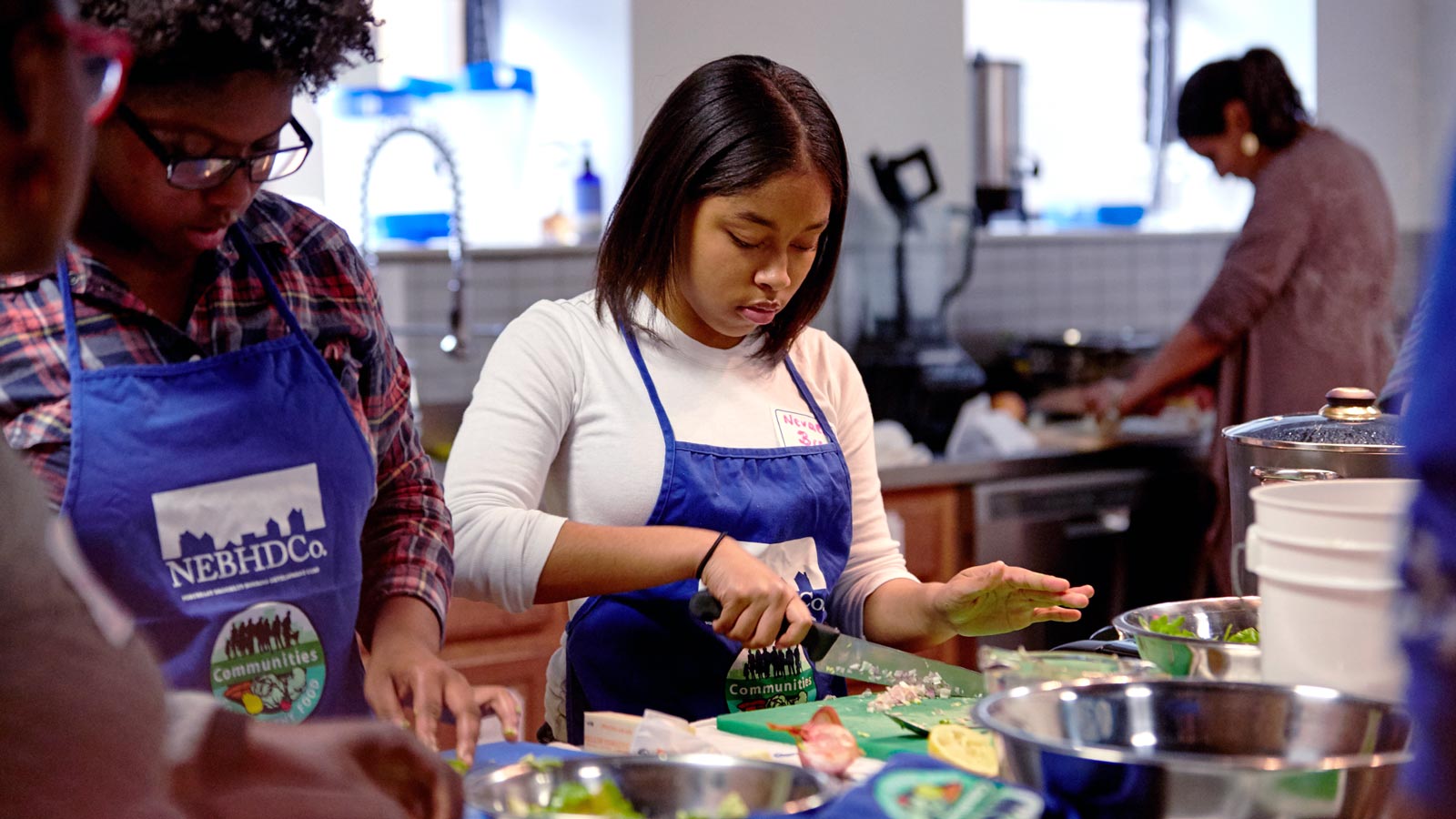

Families in low-income neighborhoods often have limited access to affordable, healthy food and experience higher rates of hunger and diet-related diseases. LISC New York City launched the Communities for Healthy Food NYC program to address these issues and create jobs and boost local economies at the same time.
The program builds upon LISC’s deep relationships with neighborhood-based organizations and its ability to leverage capital and provide technical assistance. It supports community partners in conducting resident outreach, offering nutrition education and cooking classes, and transforming vacant commercial spaces into food distribution points.
Communities for Healthy Food NYC also helps create local farmers markets, connecting low-income residents with regional farmers, encourages the use of Supplemental Nutrition Assistance Program (SNAP) benefits and trains unemployed residents for good jobs in the healthy food sector.
The program started in 2014 with a $1.6 million seed grant from the Laurie M. Tisch Illumination Fund. To date, LISC NYC and its partners have leveraged nearly $2.6 million for the program. Last year, the fund made an additional $644,000 commitment to the program. The New York City Council, for its part, has made a $1 million commitment to help the community partners advance the work over two years. LISC is investing nearly $360,000 from private and government sources to deepen and expand the program in Brooklyn, Harlem and the Bronx.
Since the program’s inception, Communities for Healthy Food NYC has delivered services to more than 155,000 New York City residents. It has provided more than a million pounds of emergency food to some 94,000 food pantry clients in Harlem and Brooklyn, enrolled 3,000 families in SNAP and created 17 new farmers markets and community gardens. It has even placed nearly 400 people in healthy food-related jobs.
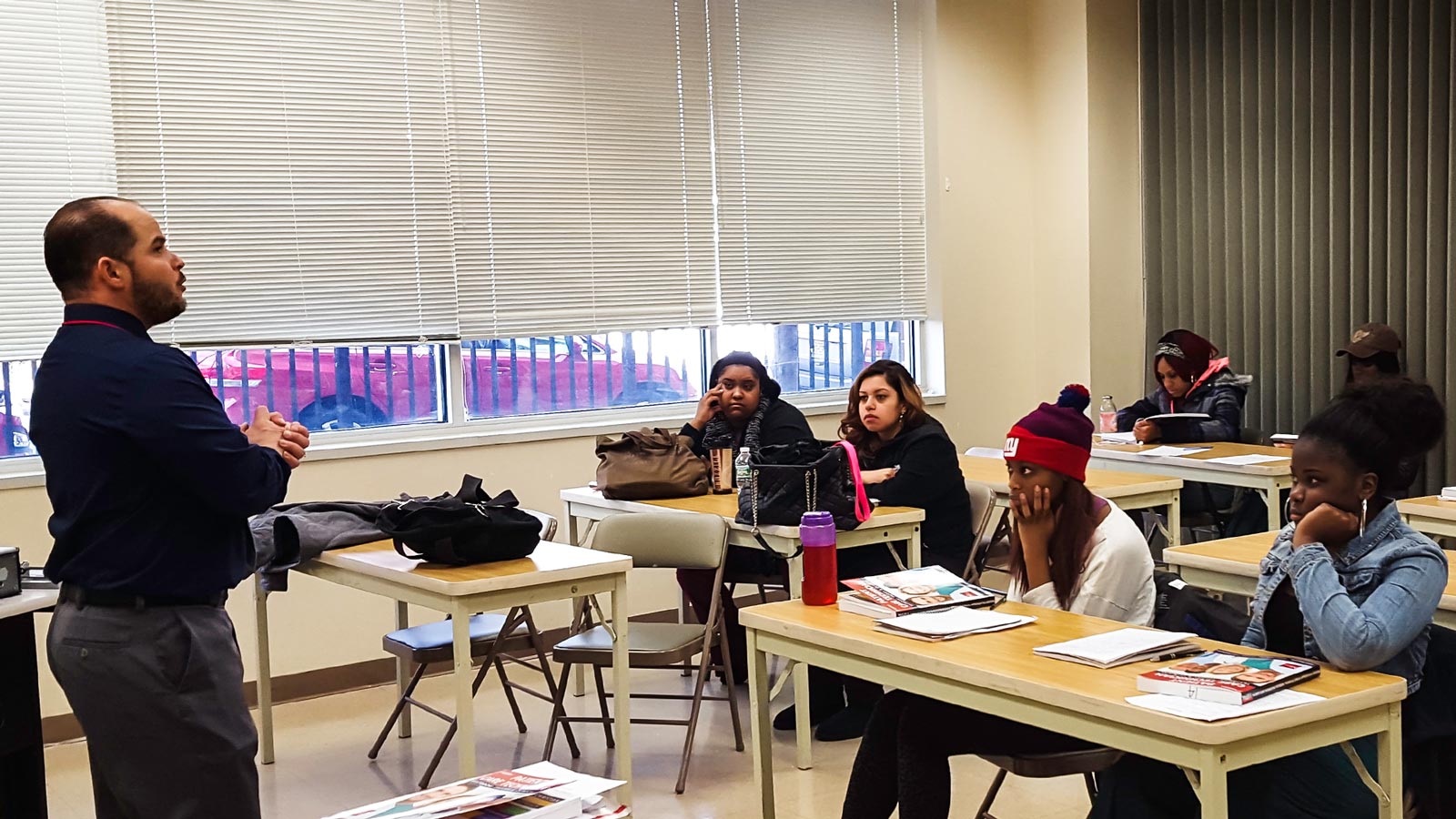

Low-income Newark residents face daunting odds in their efforts to get to financial stability. The city’s unemployment rate is double the national average, and nearly 40% of the population earns less than $25,000 annually. Many face the challenges of high levels of debt, poor credit scores and lack of savings for emergencies.
By partnering with New Community Corp. and the Urban League of Essex County to open two Financial Opportunity Centers (FOCs), LISC sought to help residents beat those odds and achieve financial and career success. FOCs provide employment and career counseling, one-on-one financial coaching and education, low-cost financial products that help build credit, savings and assets, and screening and support services for enrollment in public benefits programs. To get these FOCs started, LISC provided a total of $361,000 in grant funds and $28,000 in in-kind resources to New Community and the Urban League.
One of the Urban League’s first FOC clients was Valerie Roper, who was juggling student debt, a new baby, and trying to help her parents who had fallen behind on their mortgage payments.
“Talking to center staff about all this was embarrassing, but I knew it was important to let them know my circumstances,” she said. As it turned out, some of her problems were simply due to a lack of familiarity with available financial services, and the FOC counselors were able to help her make immediate, high-impact changes, including landing a new job and apartment.
Since they opened, the FOCs have helped 142 Newark residents get jobs and another 134 to increase their net income. And, ongoing financial coaching is supporting 250 people to make progress in the areas of savings, credit and debt reduction.
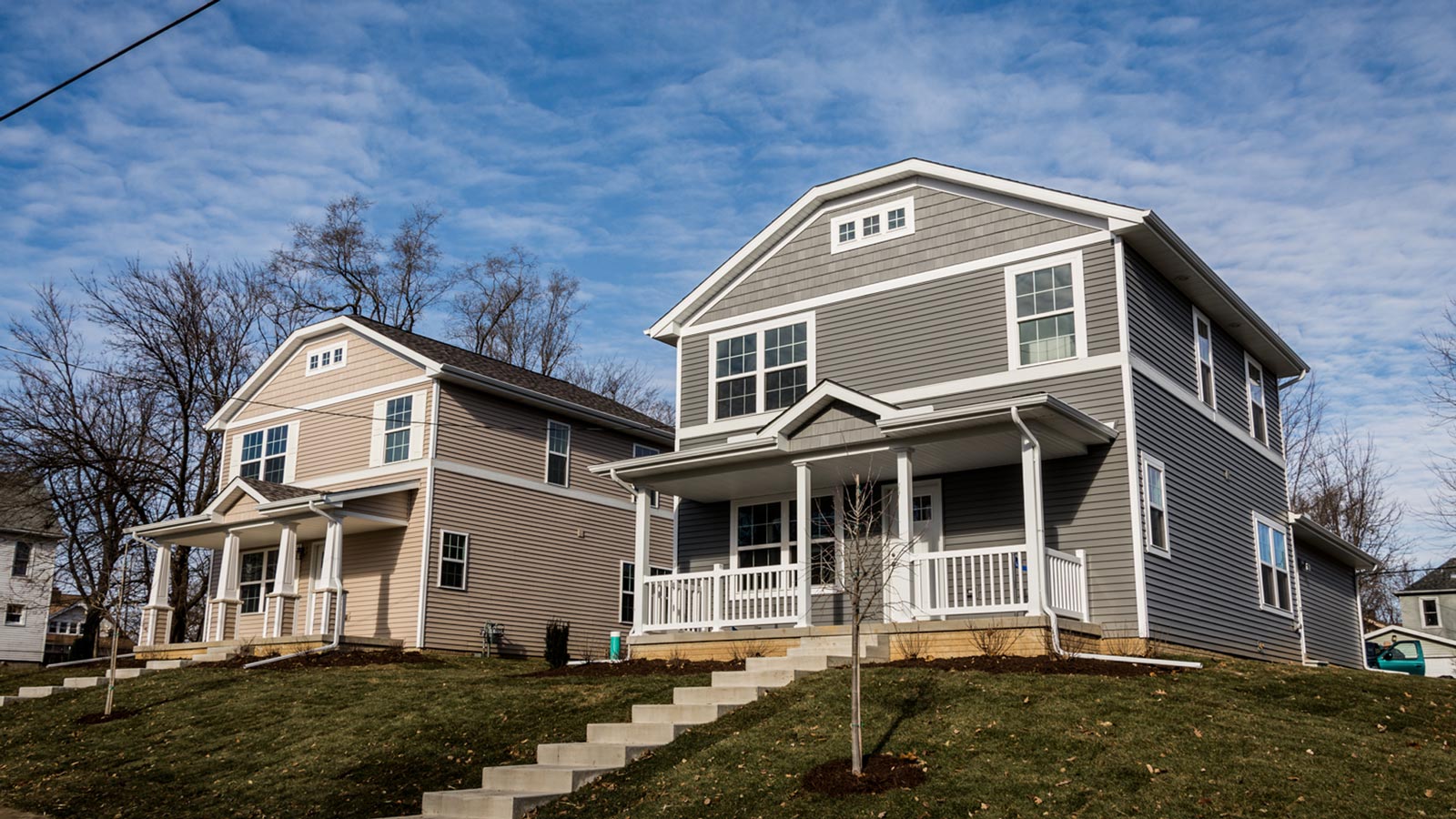

Quality, affordable housing is vital to creating economic opportunity in communities—especially those battling poverty and blight.
In Peoria, LISC has leveraged funds it helped raise from the National Mortgage Settlement to build homes in an area of the East Bluff neighborhood that has struggled to attract new residents and entrepreneurs.
Through LISC’s efforts, $4.26 million has been used for demolition and development of 14 homes, concentrated on just a few blocks to maximize the impact and build on the success of a nearby supportive housing development, also fueled in part by settlement funds and the City of Peoria.
“Block by block, house by house, we are working with the city and community groups to bring a new kind of prosperity to this neighborhood,” said LISC regional vice president Christopher Plummer, who oversees the Peoria program, which opened three years ago. “These homes lay the groundwork for new businesses, more stable incomes, better health and safer streets.”
“Some view this part of the city as being too poor or too dangerous for private investment,” he continued. “We spend every day disproving that misguided notion.”
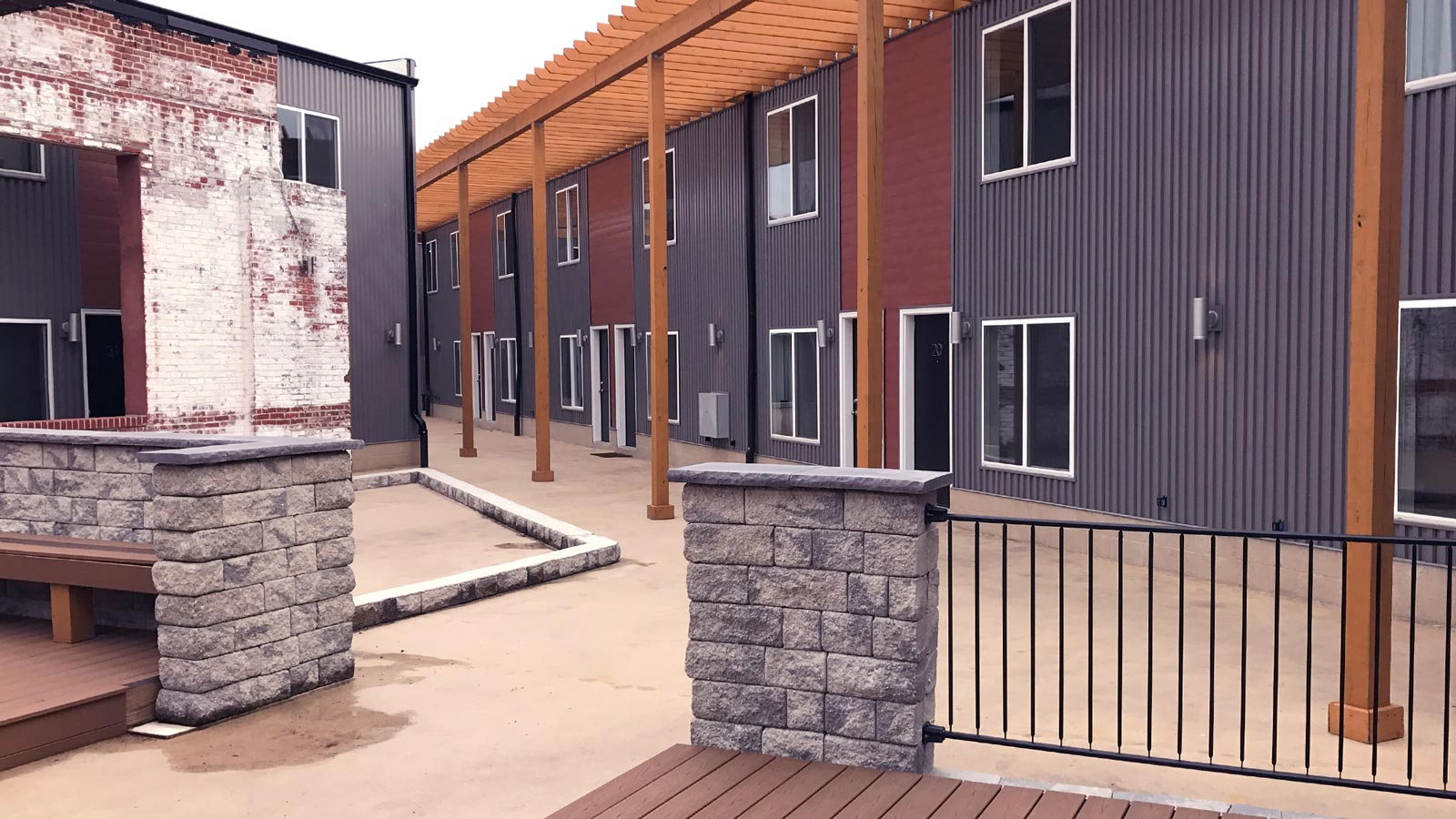

Eastern Lofts, in the Strawberry Mansion neighborhood of North Philadelphia, has a hip, sleek exterior. But look beyond the eye-catching façade and it’s clear that the new development combines the best of what community development has to offer in one project. The award-winning, mixed-income and mixed-use development transformed a historic, abandoned parking garage into affordable apartments and space for small businesses—including an early childhood education center.
When Mosaic Development Partners took on this project, they saw much more than a roofless, blighted garage that had sat vacant for more than 30 years. They were drawn to the potential for a community anchor that would eliminate a local eyesore, protect the community interests in a neighborhood experiencing gentrification, and create jobs for local residents and businesses. The project has already created 70 construction jobs and 30 permanent ones.
Eastern Lofts has become known as much for the child care center that serves some 80 youngsters as it has for its much sought-after loft-style apartments with a roof deck, fitness center and on-site parking.
“Eastern Lofts demonstrates how revitalizing blighted, abandoned buildings can bring communities together—benefitting existing residents while attracting new residents, services and businesses,” said Andrew Frishkoff, executive director of Philadelphia LISC. LISC supported the project with extensive technical assistance and a $7 million loan that leverages a New Markets Tax Credit investment from LISC partner PIDC.
“Innovative developments such as Eastern Lofts help anchor comprehensive revitalization in neighborhoods that are beginning to successfully transform,” added Tom Oldenburg, vice president of U.S. Bancorp Community Development Corporation, the New Markets and historic tax credit investor for Eastern Lofts. “This project brings much-needed child care, housing and space for growing businesses to the community. We’re proud to be a part of this exemplary work.”
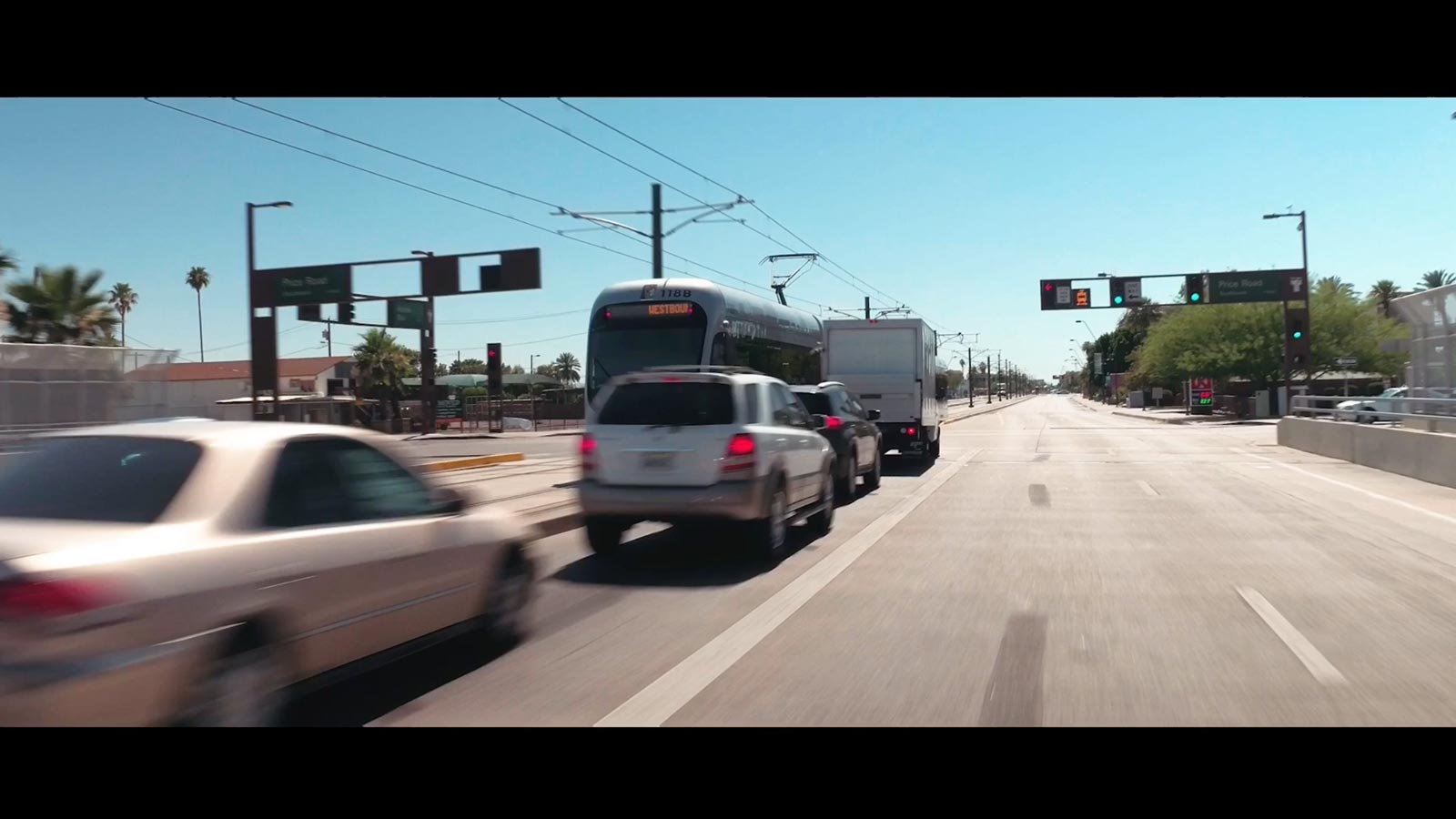

Apache Boulevard, the segment of old Route 60 that runs through Tempe, AZ, was once a major roadway used by travelers from the East to reach California. But it fell on hard times when Interstate 10 took over as the main conduit to the West Coast. The bustling motels, restaurants and shops that welcomed tourists sagged and were shuttered; blight and disinvestment soon followed.
But Apache Boulevard is on the rebound, returning to its roots as a transportation corridor with the arrival of two, light rail stops as well as new housing and businesses that offer living-wage jobs. LISC Phoenix and its partners have been at the forefront of this growth, supporting Tempe residents and entrepreneurs with a comprehensive economic development plan that combines help for small businesses, streetscape beautification and the building of a federally qualified health care center.
With the help of $9.35 million in New Market Tax Credits through LISC’s Healthy Futures Fund, the Mountain Park Health Center began construction of a community clinic on land that was once a boat dealership. The new space is triple the size of the health center’s original Tempe location, which means triple the number of jobs in an economically distressed area. (The center’s average salary is $50,000.)
Nearby, a $100,000 grant, through LISC’s partnership with the NFL Foundation, helped renovate an underused park between a local elementary school and the Escalante Community Center. NEDCO, a LISC community development partner, worked with the City of Tempe and a developer to replace a vacant, blighted building with landscaping. And, together with nearly 100 neighbors, NEDCO helped install a “paint-by-numbers” mural leading from the street to the center’s community garden.
Apache Boulevard’s revival also involves its re-branding as “The Spice Trail.” The boulevard is dotted with family-owned restaurants serving Middle Eastern, Indian, Pakistani and Vietnamese cuisine. With a grant from State Farm, LISC helped many of these corridor businesses make storefront improvements, elevating the Spice Trail to a destination well worth the trip.


The Pittsburgh network of Financial Opportunity Centers (FOCs) brings together partners and resources focused on helping low- and moderate-income residents build up their financial capacity.
Over the last two years, the network’s three FOCs offered employment, education and financial services to more than 1,700 people, with some 700 finding new jobs.
“Clients often come to us with fires to put out immediately—overwhelming credit card debt and student loans–and I can first act as counselor, showing them what the problem is and how to fix it,” said Shay Port, financial coach at the FOC at Oakland Planning and Development Corporation’s JobLinks program. The other local FOCs are operated by the Mon Valley Initiative and Northside Common Ministries.
“After we address the immediate concerns, we do an action plan that includes budgeting, saving and debt payoff,” said Shay, explaining the process. “At the same time, they work with an employment specialist to get a job.”
In fact, many who visit the Pittsburgh FOCs are facing significant challenges. Sixty-five percent of Mon Valley’s FOC clients have criminal histories or have been touched in other ways by the justice system, which has deeply impacted their economic outlook. Northside Common Ministries’ FOC is co-located with a temporary homeless shelter. And Oakland’s FOC serves many clients on cash assistance who are looking for ways to move into decent jobs that will help them support their families.
“They opened up a whole new world for me that I knew nothing about,” said Natasha Sayles, a 29-year-old single mom, of the FOC coaches who have helped her stabilize her finances and build employment skills.
“At first I felt very vulnerable, uncomfortable, embarrassed,” Sayles added.
“It didn’t matter that I was on welfare. They made me feel that I am qualified, I am smart. I just needed confidence and resources. They gave me all that.”
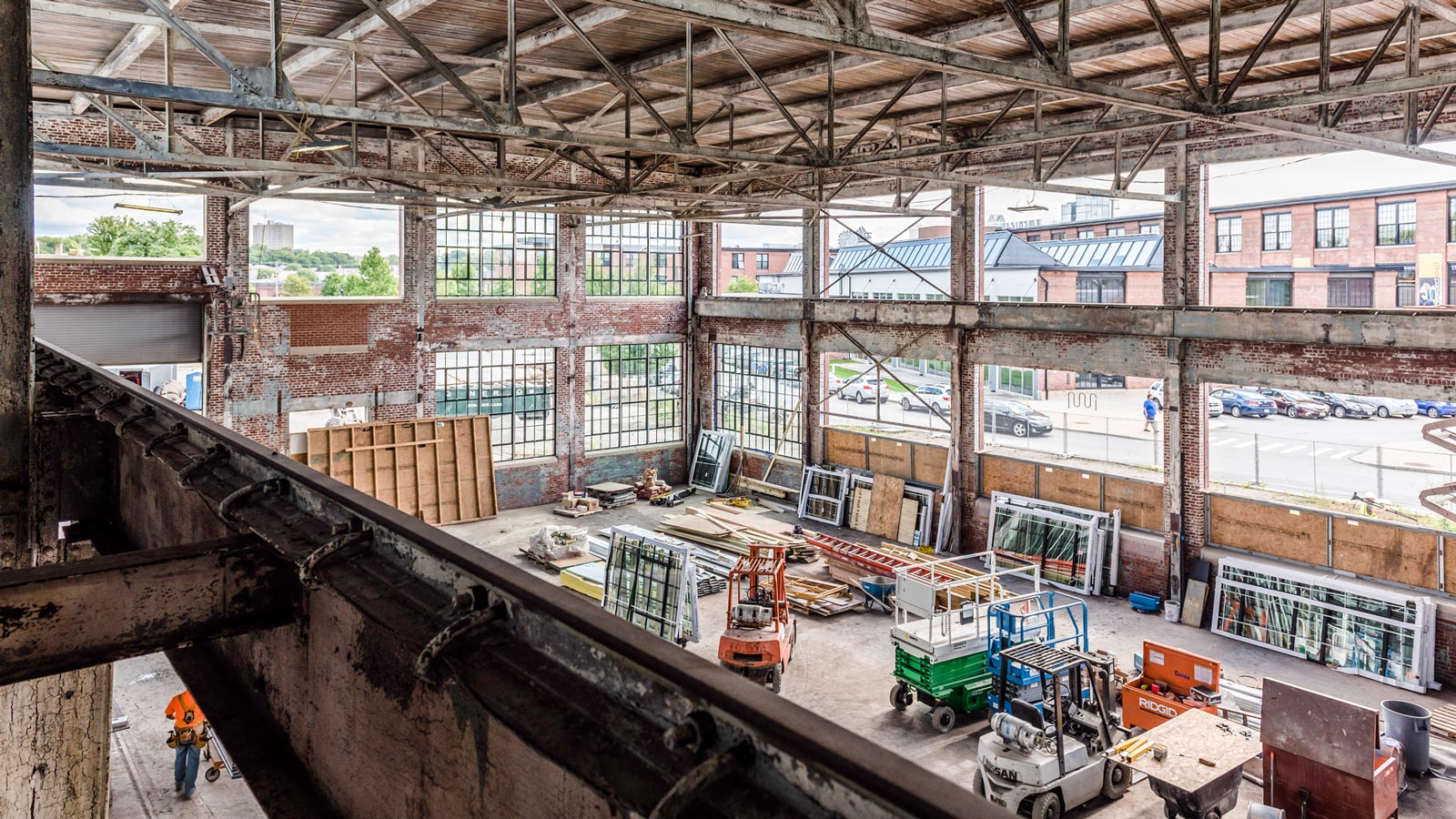

Nestled between the Providence neighborhoods of Olneyville and Valley is a once-prominent manufacturing building that for years sat vacant, its windows boarded up. In 2014, the nonprofit organization WaterFire Providence purchased the property on Valley Street with plans to turn the abandoned building into an arts center.
WaterFire Providence is led by artist Barnaby Evans who since in 1994 has created award-winning fire sculptures on the three rivers of downtown Providence. Today, Evans’ installations are permanent fixtures along these rivers and are lit nearly every other weekend in the summer and fall, attracting more than one million visitors per year.
Thanks to the grassroots efforts of local art supporters, WaterFire has evolved from a dynamic art exhibition into a non-profit arts organization whose mission is to inspire Providence and its visitors by revitalizing the urban experience, fostering community engagement and transforming parts of the city with art. But it needed an appropriate home base.
Rhode Island LISC recognized that the abandoned property at 475 Valley Street could be a catalytic opportunity for economic growth in Olneyville and Valley, both low-income communities. Between 2014 and 2016, LISC provided $6 million in loans and $5 million in New Markets Tax Credits. Additionally, LISC has provided WaterFire with a variety of technical assistance, including help to secure state historic tax credit financing and assistance with the community engagement process in redesigning the building.
The project has already spurred the development of 302 units of housing along this previously underinvested corridor. WaterFire Arts Center will provide space for creative expression and programming in a community where that does not yet exist. It is expected to host at least 10,000 visitors and students annually, who will attend events, exhibitions and performances and take part in out-of-school enrichment programs. The WaterFire Arts Center will also function as the support facility for all of WaterFire’s activity around the city—activity that generates $114 million a year for local businesses, $9.3 million in tax revenue for the state of Rhode Island and some 1,300 jobs for community residents.
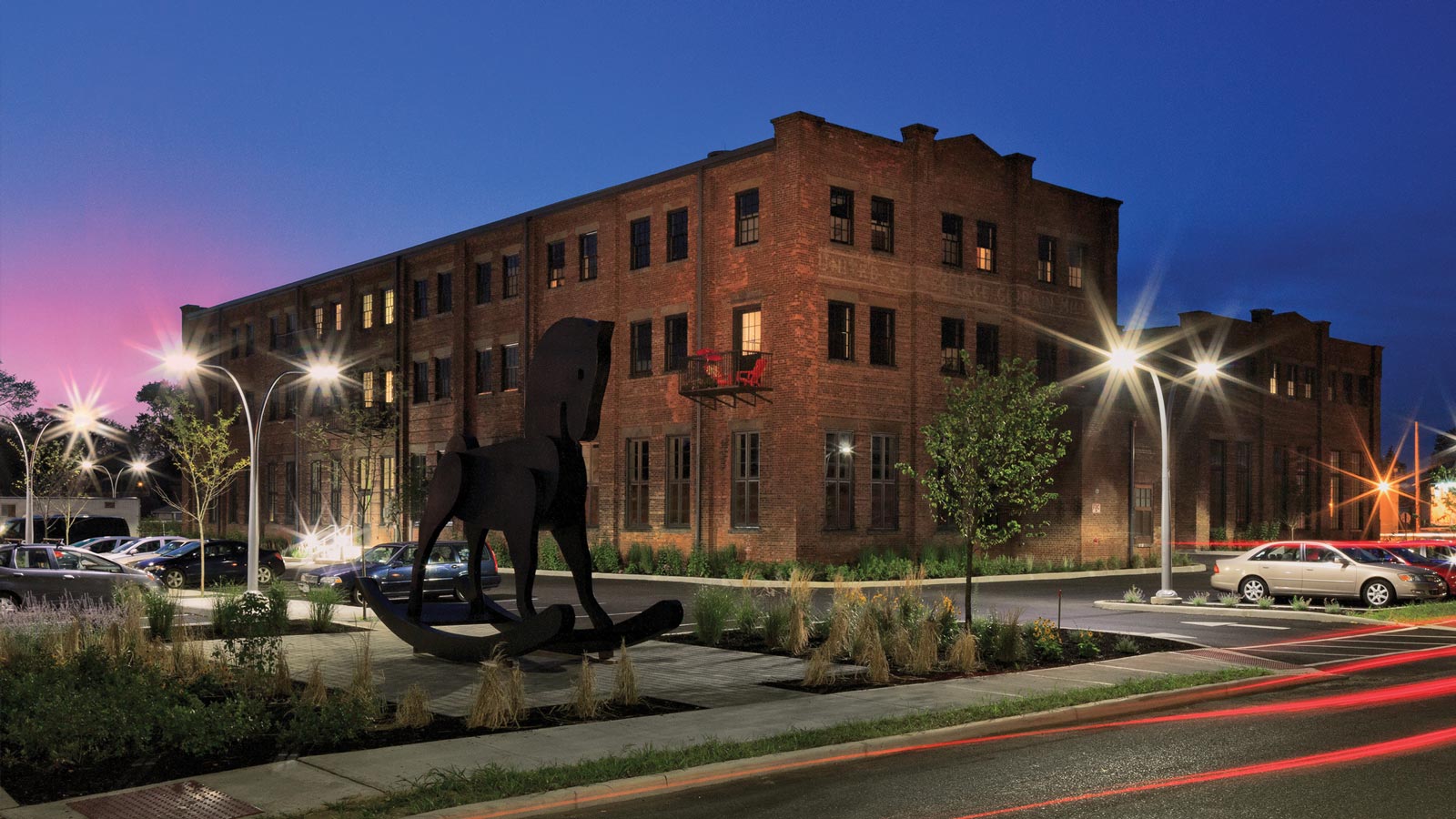
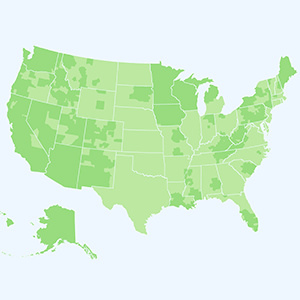
Like old manufacturing operations across rural America, the United States Lace Curtain Mills in Kingston, N.Y., once thrummed with industry, employing hundreds of workers and fueling life in the community. But Kingston has suffered population loss and disinvestment for the better part of a century, and the 1903 brick building has been boarded up, abandoned and under-used as a warehouse for decades.
Now, the old factory building has come back to life as The Lace Mill with a different purpose and under the helm of LISC’s longtime partner, RUPCO, a nonprofit that services multiple Hudson Valley counties.
Conceived as both a housing complex and an economic development effort, the $18 million project is coming into its own as a center of cultural activity as well as providing affordable housing for the burgeoning arts community in the region. The factory holds 55 affordable rental units, all home to artists. In addition, The Lace Mill has several gallery spaces, work studios and sculpture gardens. Other amenities include state-of-the-art thermal heating and cooling, solar panels on the roof and energy-efficient lighting.
Rural LISC supported the project with more than $10 million in equity from LISC’s affiliate, the National Equity Fund, which included federal low-income housing tax credits, federal historic tax credits and New York State historic tax credits. LISC also provided $45,500 in grants for predevelopment, capacity building and arts and culture. A creative placemaking grant through LISC also supported the salary for a “community animator” who helps The Lace Mill to be self-governing and publicizes the arts and educational events to the larger community.
According to Kingston residents and the developers of the project, The Lace Mill has already had a profound impact on wellbeing in the Midtown district of Kingston by sparking more tourism and inspiring galleries and restaurants to open in nearby vacant buildings. RUPCO conducted a survey in 2016 that showed dramatic improvements in the community. As Guy Kempe, RUPCO’s vice president of community development, said, “Residents and visitors now recognize Midtown as a good community to live in.”
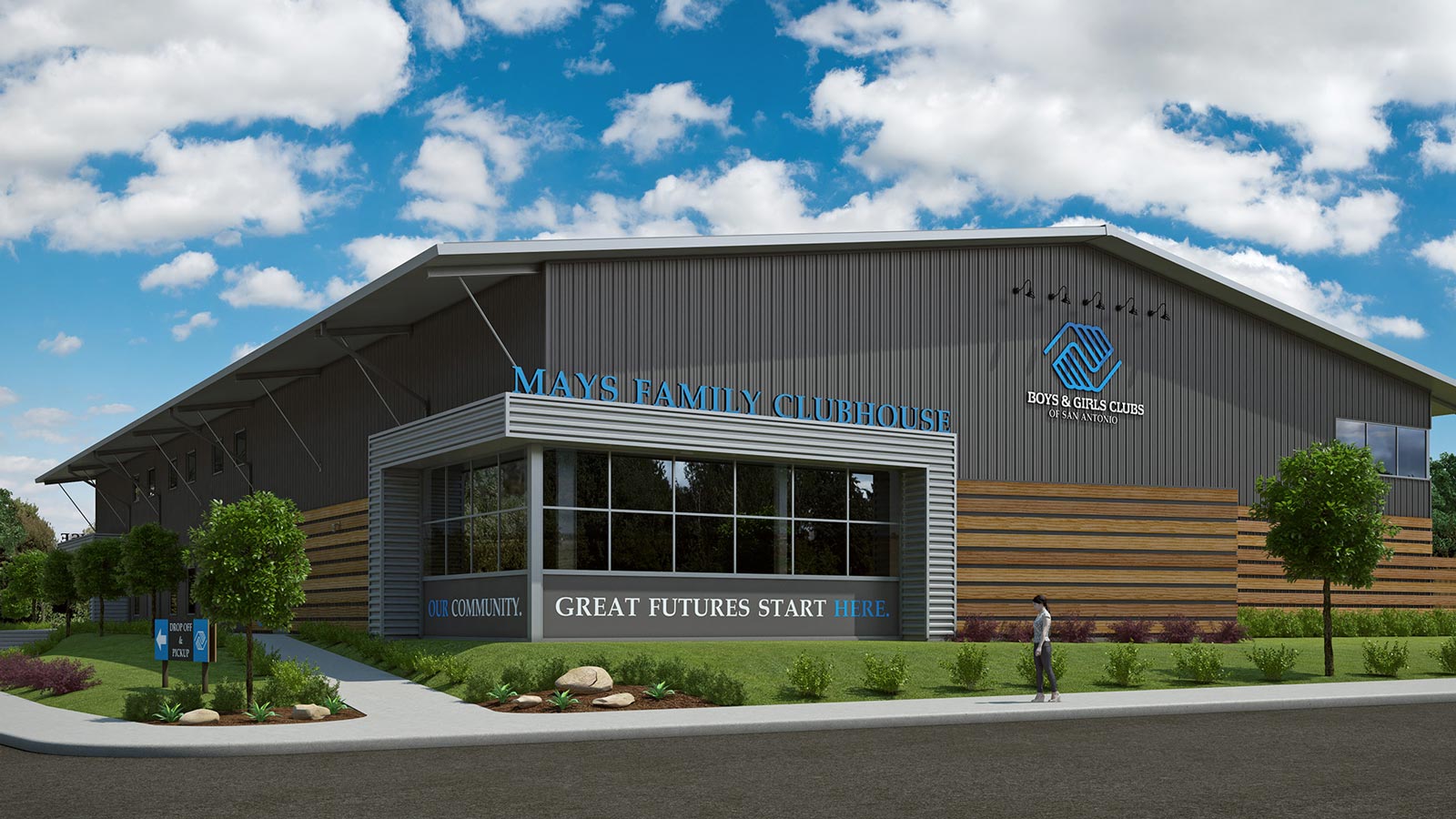

LISC’s newest urban program hit the ground running after opening its doors in June 2016, providing capital to advance a new Boys and Girls Club and a development that will include 75 homes for purchase.
“The Mays Boys & Girls Club is the result of grassroots efforts by the Lone Star Neighborhood Association and neighborhood residents to fill the gap of positive recreational and educational activities for youth in the area,” said Alice Salinas, senior program officer with LISC.
Funded in part through LISC’s allocation of federal New Markets Tax Credits, the facility revitalizes vacant, formerly blighted, land also features a range of community initiatives, including a cooking demonstrations to promote healthy eating and financial training that helps people improve their economic outlook. LISC and the Mays Club operators are also exploring other business opportunities to help energize the neighborhood.
Both projects are creating jobs and new opportunities in the area. The 11-acre housing development, being built by Alamo Community Group, fills a gap in affordability in homeownership. A loan from LISC helped Alamo acquire the land, and the organization is planning to work with the City of San Antonio on infrastructure improvements and with local financial institutions on special financing for first-time homebuyers.
“This is about giving families the chance to live, work and raise their children in communities where they can flourish,” Salinas said. “At its core, that is what community development is all about.”
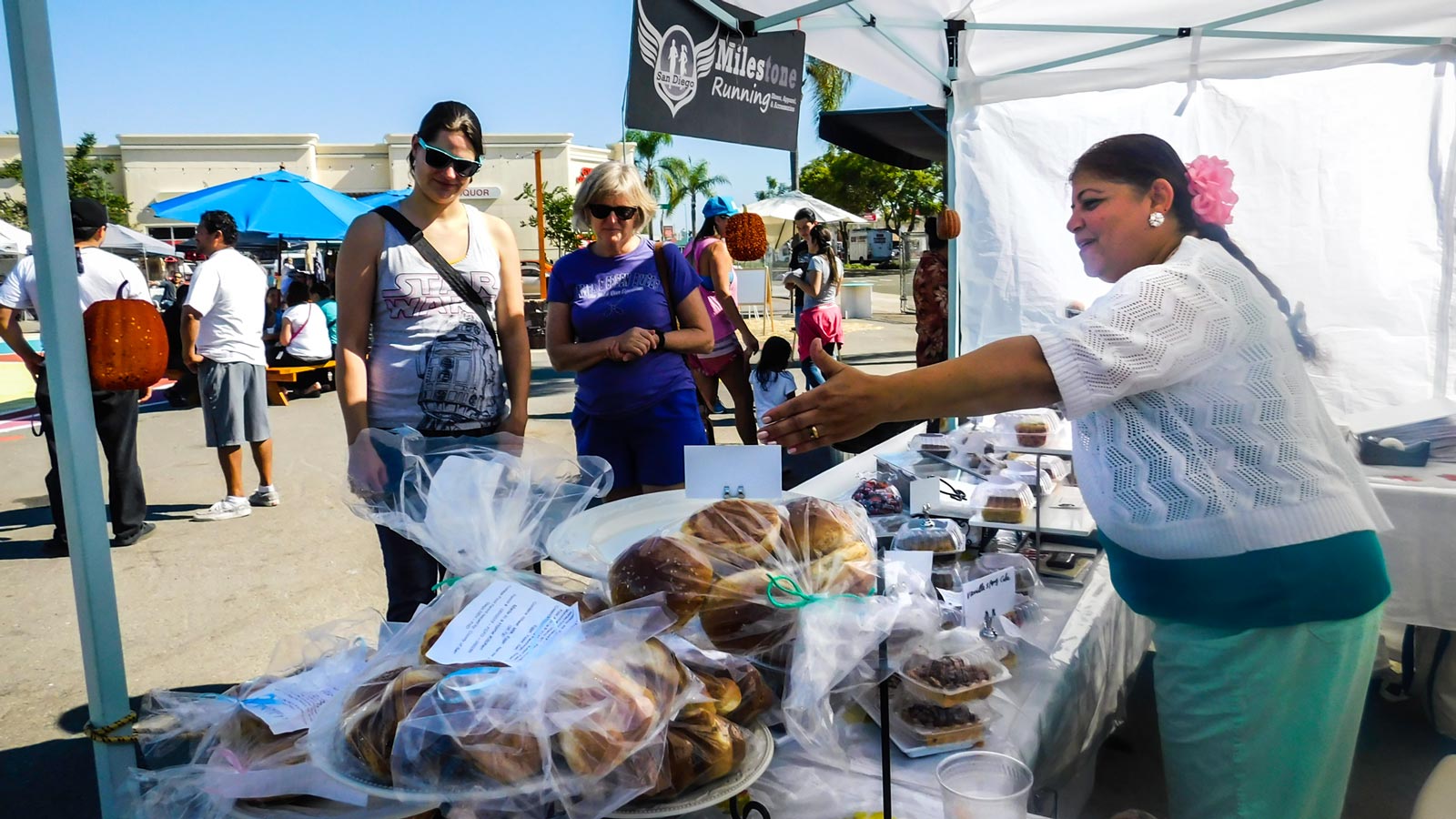

It’s hard to bring your goods to market if you don’t know what it takes to get there.
With the Fair@44, a new outdoor market in the City Heights district of San Diego, LISC is helping create opportunities for budding entrepreneurs as well as setting the stage for community-led development in the neighborhood. The Fair@44 also brings together hundreds of neighbors every Wednesday to sample cuisines and goods from eight countries and dozens of businesses.
The City Heights Economic Development Collaborative, a consortium of community groups known as “the Collaborative,” conceived the market as an incubator for first-time micro-entrepreneurs. The entrepreneurs are mainly immigrant women who are learning to get their businesses off the ground. Part of LISC’s $42,000 investment in the project includes technical assistance for these vendors.
When it opened last October, the Fair@44 transformed an open lot, long used to store construction equipment, into a bright, welcoming community gathering place. Since then, the market has helped launch three new businesses, increased the earning potential of six growing businesses, and increased employment opportunities for 13 local artists and entertainers.
One of these new businesses is La Portranca Tapatia, where Mireya Galvan sells her locally famous tortas ahogadas, sandwiches filled with slow-roasted pork and spicy red chili sauce. In her hometown of Guadalajara, Mexico, she said, “I began to support my children by selling my mother’s homemade tortas. After I moved to San Diego I continued to make them for my family.” But the idea of taking her skill and her wares into the American market seemed daunting.
“So many of the vendors started cooking in their own kitchens for supplemental income, just like Mireya did for her family,” said LISC program officer Jason Jarvinen. “That’s where the Collaborative comes in, to help them obtain necessary permits, often a complex process for first-time entrepreneurs. This is part of our on-going strategy to activate under-utilized spaces and provide entrepreneurship opportunities for local residents.”
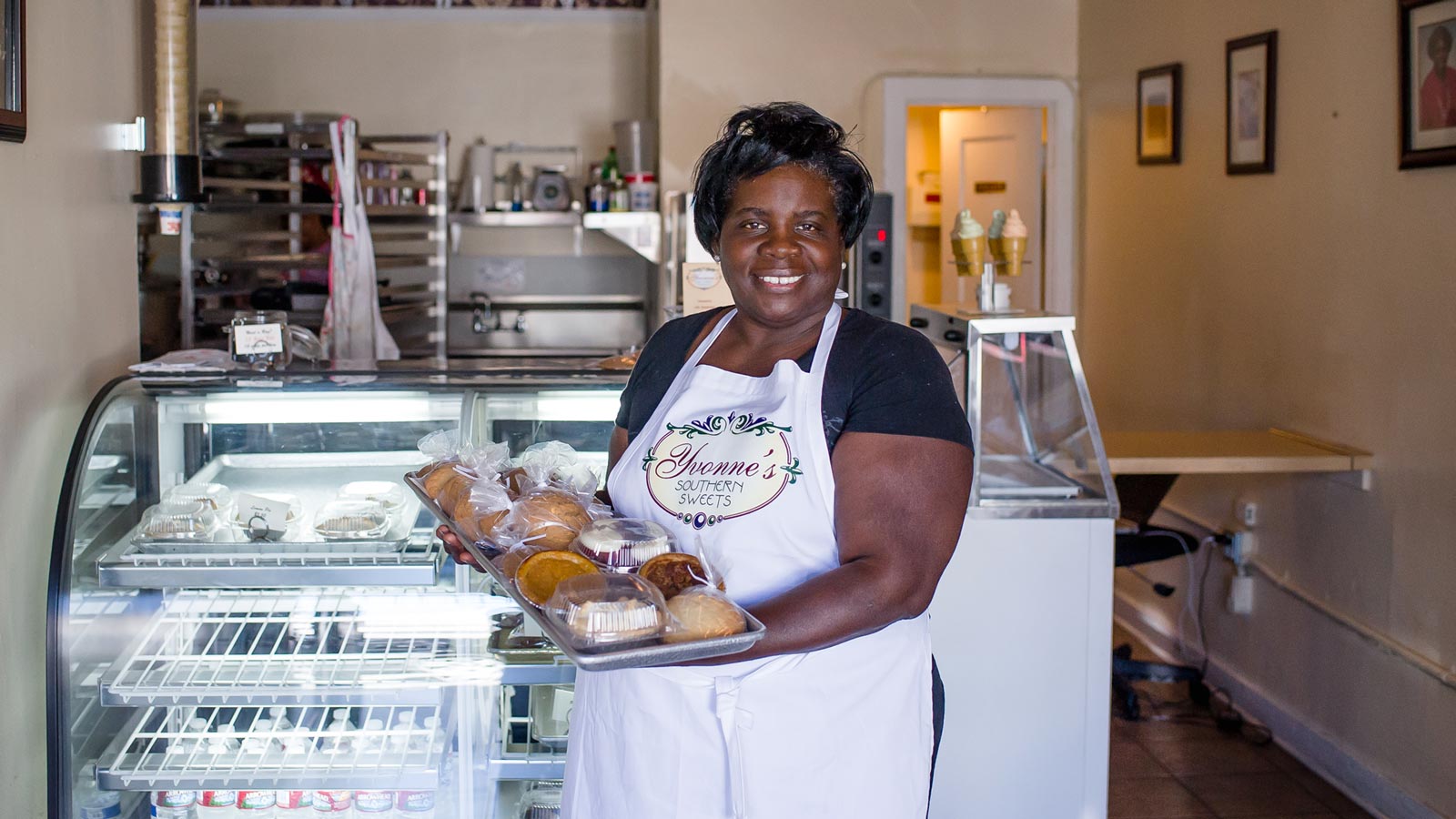

Is it possible to revitalize a commercial corridor without displacing existing businesses? And can you attract new enterprises that create jobs for local residents at the same time? San Francisco’s Bayview neighborhood offers a resounding “yes” to both questions. A partnership between Bay Area LISC and the City of San Francisco is providing intensive, tailored investments through the city’s “Invest In Neighborhoods” initiative that are turning Bayview into the kind of place where people want to do business.
In a city of rampant development and soaring real estate prices, Bayview, an historic African-American neighborhood, had long been cut off from the broader growth and prosperity of the region; it currently has a high number of vacant and blighted buildings. Working closely with the city, LISC brought together key business and property owners to create a leadership group known as Economic Development on Third (EDoT), now a self-governing nonprofit that focuses on business development for the Third Street corridor.
The partnership began to address the vacant blighted properties along Third Street by launching a façade improvement program. In just one year, the initiative completed nine storefront improvements, attracted seven new businesses, created 27 jobs and leveraged more than $1.8 million of public/private investment to address blight and safety issues along the corridor. It also attracted a small local grocery store to a long-vacant site and secured a grant to work with community volunteers to design and install a “living” wall of greenery along a fenced property.
In addition, LISC provided more than 1,000 hours of technical assistance and extended more than $100,000 in grants to Bayview businesses for façade and beautification projects. LISC’s leadership in this project positioned it to manage an additional $2.75 million for a façade and tenant improvement program that is expected to attract some $2 million in matching funds, drawing more businesses to the Third Street corridor, and creating more jobs.
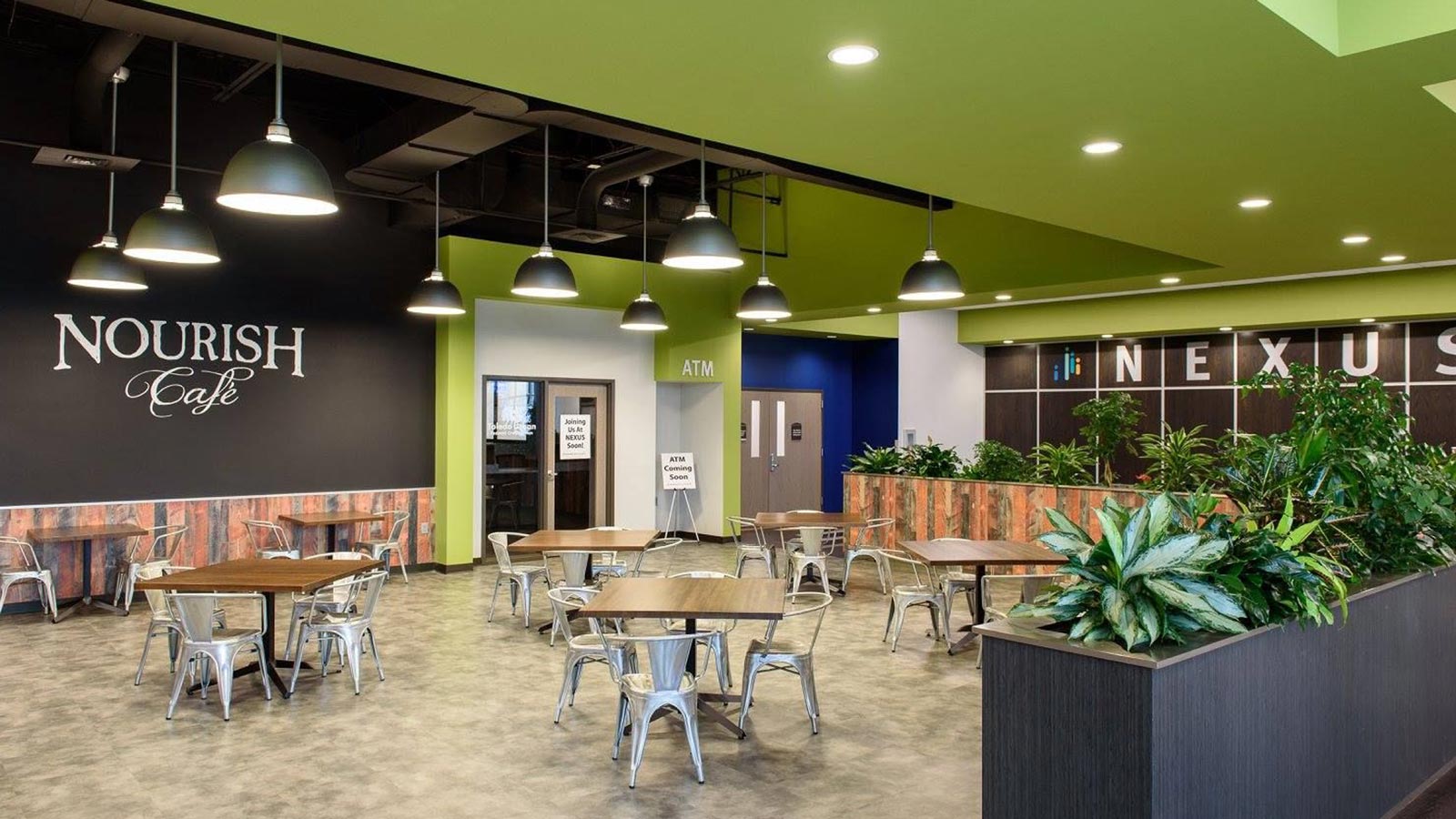

LISC’s Healthy Futures Fund (HFF) has been a unique source of financing and support for innovative local efforts, including new federally qualified health centers, which provide care for residents regardless of their ability to pay.
A new clinic in Toledo has taken that concept a step further. With $7.3 million in support from HFF, the new clinic integrates a financial services provider, a job-training program, housing assistance, homeless services and a range of heath care—all adjacent to transit, so it’s easy to access.
It’s called Nexus Clinic, and it reflects an expansive view of what it takes to help people improve their overall wellbeing. The project was developed by Neighborhood Health Association (NHA), a federally qualified center in Toledo, so it could reach more people and connect them to vital resources.
“This project highlights what can be accomplished when we integrate community development and health perspectives,” noted Kim Cutcher, LISC Toledo’s executive director. “For families to live well, they need good jobs and decent housing just as much as they need preventative care, dental services and nutrition counseling. NHA recognized that and worked to put critical programs and services under one roof.”
The project was built on what had been a vacant brownfield site—transforming toxic, blighted land into a busy center of health and commerce that created jobs and improved the streetscape on a well-traveled corridor through the city.
“I’m really excited to have this kind of facility in our community, one designed to serve absolutely everybody,” said Doni Miller, chief executive officer at NHA. “It’s important that people, no matter who they are, feel valued and honored. And this facility does that.”
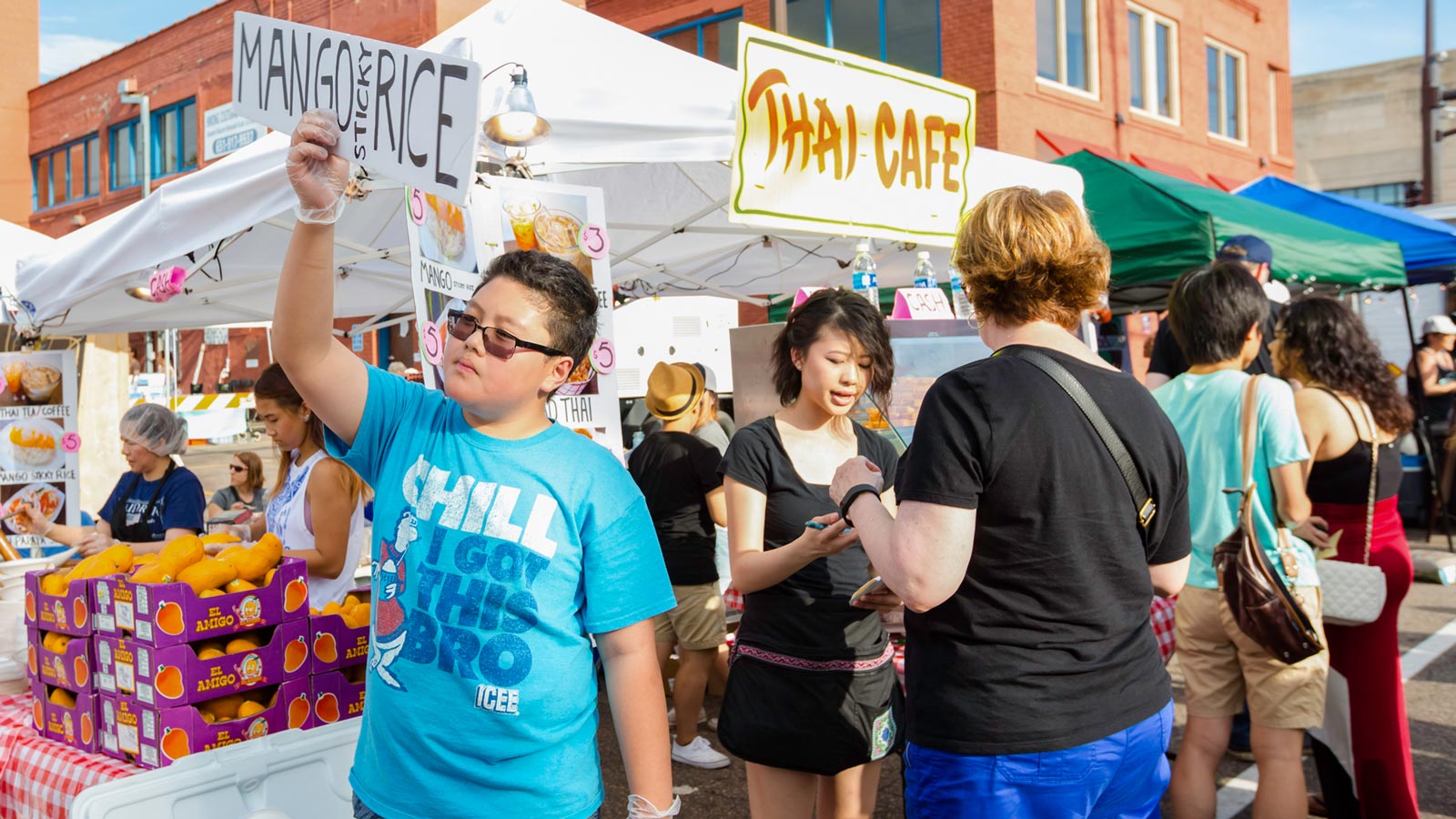

In St. Paul’s Little Mekong Business and Cultural District, the arts are helping celebrate the community’s culture and boost the local economy—all while taking advantage of new opportunities offered by the city’s expanding light rail system.
Back in 2012 Twin Cities LISC began working with the Asian Economic Development Association (AEDA) on a creative placemaking strategy that would engage artists and small businesses to redevelop the area. More recently, that has included redeveloping an underused space into a business hub for artist entrepreneurs—where they can access business development services, financing, and creative space, all under one roof.
“By working with local artists, performers and makers, we have created partnerships that are revitalizing the Little Mekong District after the effects of the recession, and in light of the potential for growth we saw with the new light rail,” said Va-Megn Thoj, AEDA’s executive director.
LISC has also worked with AEDA to promote Southeast Asian-owned businesses in Little Mekong and, in the process, helped transform a deteriorated stretch—most notable for its auto shops—into a safe and pedestrian-friendly space.
“AEDA engaged local stakeholders in extensive planning and design to carry out at a common vision for the neighborhood,” said Andriana Abariotes, Twin Cities LISC executive director.
The efforts might be best exemplified by the Little Mekong Night Market, an annual summer festival that draws 20,000 people and generates more than $100,000 over the course of a weekend. It features 300 artists, 65 vendors and dozens of neighborhood businesses.
“The district is a vibrant regional retail and commercial destination where people from all walks of life come to enjoy the diversity of cultures, top-rated restaurants, shopping experiences, and arts and cultural events,” Abariotes said. “This community has leveraged the arts to generate significant economic benefits.”


Ask anyone in the Church Hill district of Richmond what they most need in their neighborhood and the answer is almost always “a grocery store.”
A federally-designated food desert, Church Hill has lacked a full-service grocery store for years, but residents and business owners will finally get their wish when a supermarket opens in 2018 at the intersection of 25th Street and Nine Mile. The location is no accident.
A corridor assessment of the area conducted last year by MetroEdge, a LISC economic development program, stressed that the supermarket is more likely to succeed if it’s surrounded by a lively commercial district. That has been in the works for five years, thanks to a Virginia LISC initiative called SEED, an economic development program that provides grants and coaching to attract small business to a distressed corridor. With the partnership of the community investment arm of the Bon Secours Richmond Health System, 25 local businesses have received a total of $325,000 in SEED grants to get their enterprises to the next level.
LISC is also providing $8 million in New Markets Tax Credits for the development of the supermarket. The project is located right in the center of Church Hill, less than a mile from four public housing communities. Affordable, healthy food choices are scarce, and chronic health issues such as diabetes and obesity are common. In addition, unemployment is high and jobs are few.
The Church Hill North Retail Center will address these problems with a modern, mixed-use center which will include apartments, a culinary arts school with an attached restaurant as well as the full-service grocery with a pharmacy and banking services. The project will provide employment and education opportunities, and generate more foot traffic to the area, benefitting nearby small businesses.
“Having thriving businesses nearby is vital to ensuring that the grocery meets sales projections and is sustainable,” said Candice Streett, executive director of Virginia LISC. “And having a grocery store will ensure a vibrant corridor for the small businesses.”
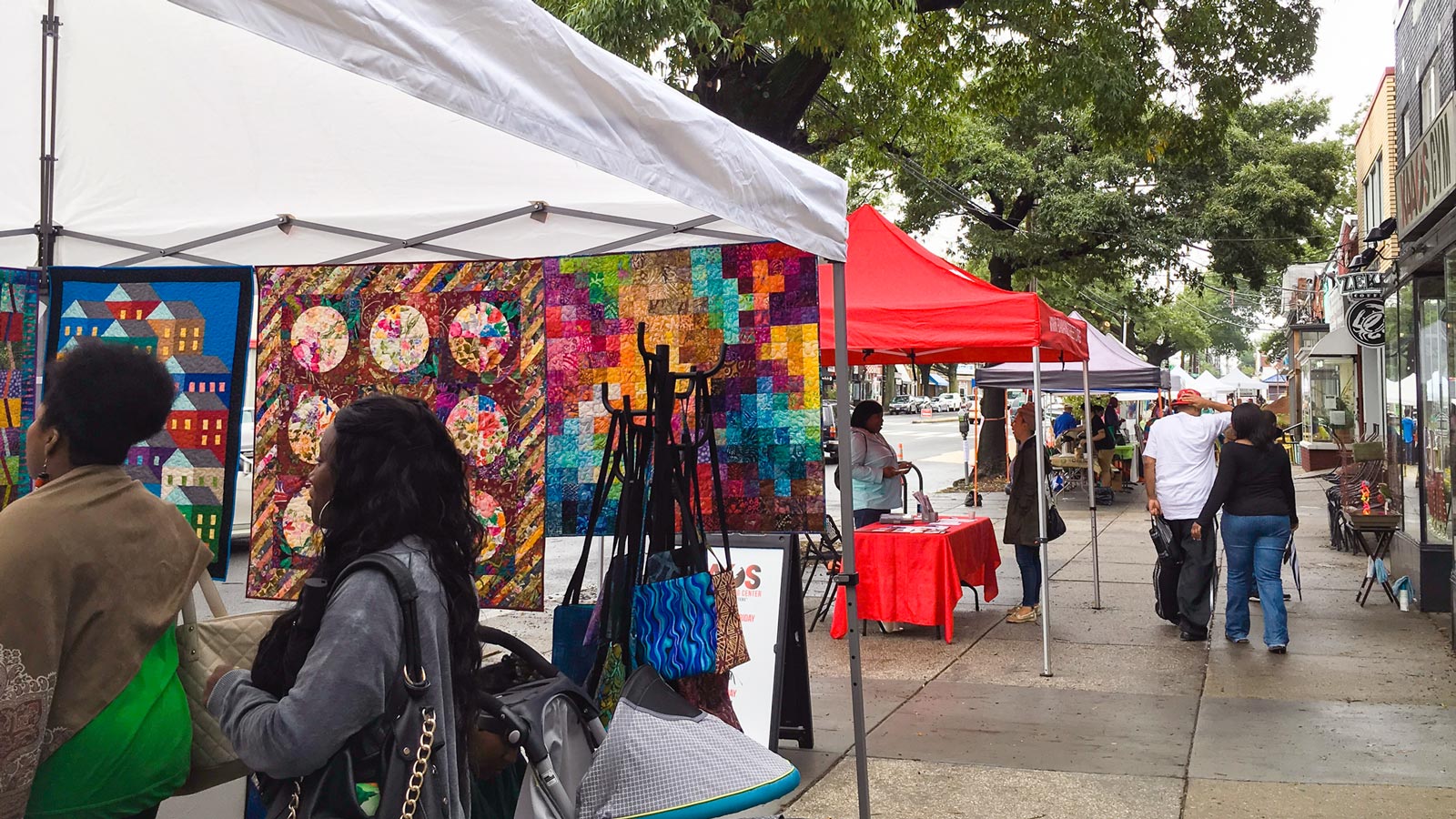

In Washington D.C., the Rhode Island Avenue NE commercial corridor is the iconic U.S. Route 1 that runs from Maine to the Florida Keys. It was once the thoroughfare for travelers making their way along the East Coast, generating brisk commerce and jobs for the adjacent DC neighborhoods.
Today, the corridor is a six-lane commuter artery, traversed by more than 31,000 vehicles daily, and passes through five neighborhoods. But goods and services along the avenue have been in short supply, and the far northeastern portion of the corridor had long been designated a food desert.
In this city’s quickly changing commercial and residential landscape, LISC DC has prioritized supporting the Rhode Island Avenue NE Main Street (RIAMS), one of 10 DC Main Street groups working to revitalize traditional corridors. RIAMS focuses on ensuring that both existing and new businesses receive the assistance they need to thrive along the avenue.
At the outset, LISC’s MetroEdge corridor consultants offered key market data, such as estimates of retail leakage—information that helps to identify market demand for businesses not currently located along the corridor. This analysis is now being used to recruit new retailers. MetroEdge also provided a crucial framework for how RIAMS should build its organizational capacity in order to support the development of the corridor. (That included using LISC Section 4 funds to hire a bookkeeper.)
One of the new businesses that has emerged as a result of this collaboration is Good Food Markets, a small-scale grocery store and hub for healthy eating. Good Food Markets has created eight new jobs, is hosting cooking classes with neighborhood partners and provides substantial discounts on produce and other goods for lower income households. LISC’s early investment of $50,000 helped to open the Good Food Markets and increased RIAMS’s capacity to support existing and new businesses and bring vibrancy to the corridor.
All photographs and videos from LISC archives, except for the following:
Local Stories
Boston: Darlene DeVita Photography
Buffalo: Darren Cotton, UDCDA
Chicago: Gordon Walek
Cincinnati: MORTAR
Connecticut Statewide: Connecticut Main Street Center
Detroit: Michael G Smith
Duluth: Happy Tree Productions
Flint MI: Communities First, Inc.
Kalamazoo MI: Fran Dwight Photography
Hartford: Hands on Hartford
Houston: Ciara Major, SER Houston
Jacksonville: Amy Ploss-Samson
Los Angeles: Wendy Chung
New York City: Jason Lasswell
Peoria: Marvin Forssander-Baird
Phoenix: Epic Light Media
Rural: David Miller
Rhode Island: Elaine Fredrick
San Francisco Bay Area: Chloe Jackman Photography
Twin Cities: Anna Min Enterprises
Donors
1: Reeve Jolliffe/Gas Tower Studio
2: Deb Lindsey
4, 8: Charles Chessler Photography
6: Marvin Forssander
7: Mikki Schaffner Photography
9: Ivan Martinez Photography
10: Gordon Walek
13: Mike Bosket
14: Wendy Chung
15: Young Smith
Team
2, 5, 8, 12: Scott Wilson
7: Gordon Walek
14: Daryl McLean
17: Urban Prairie Films
All writing by LISC